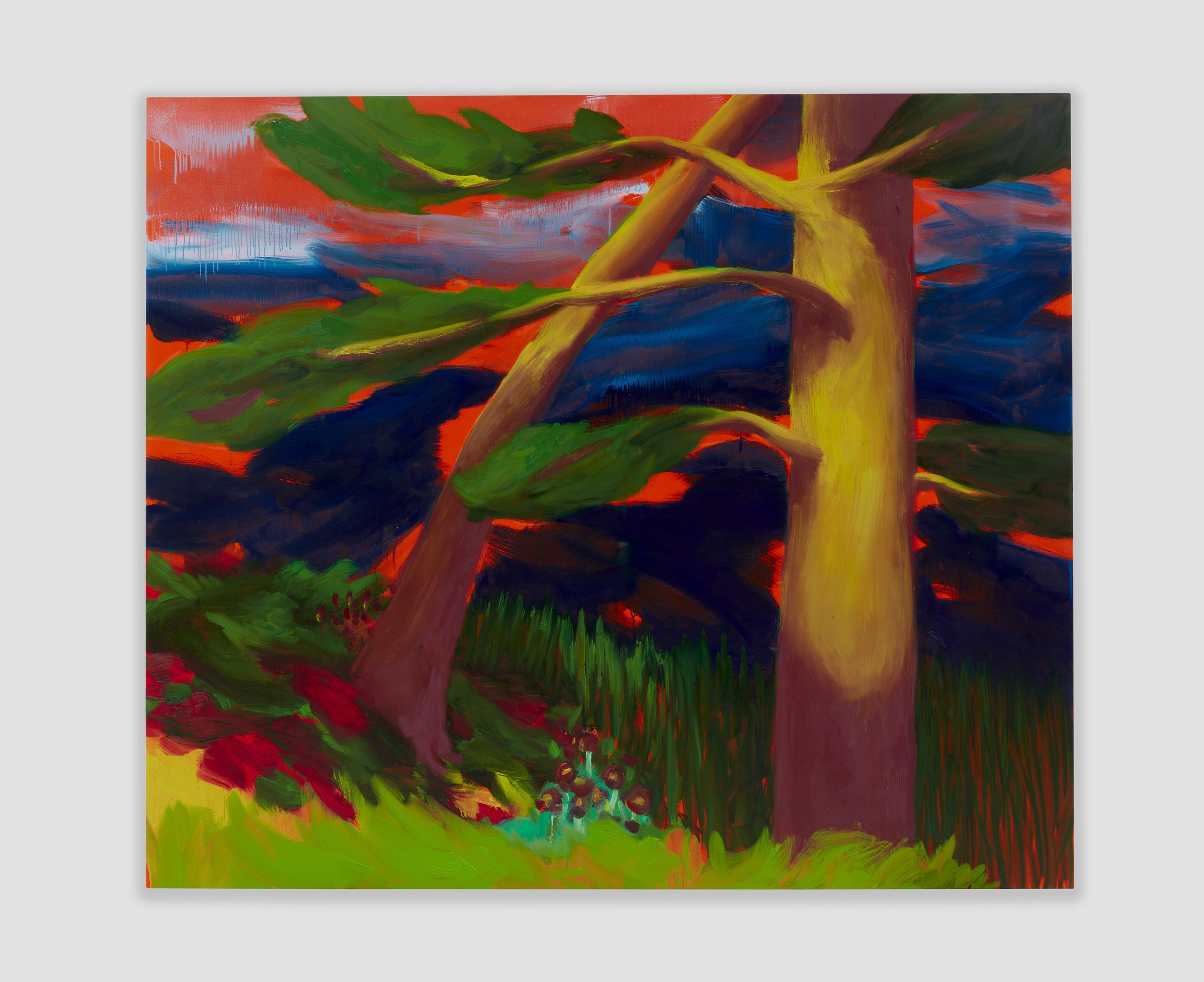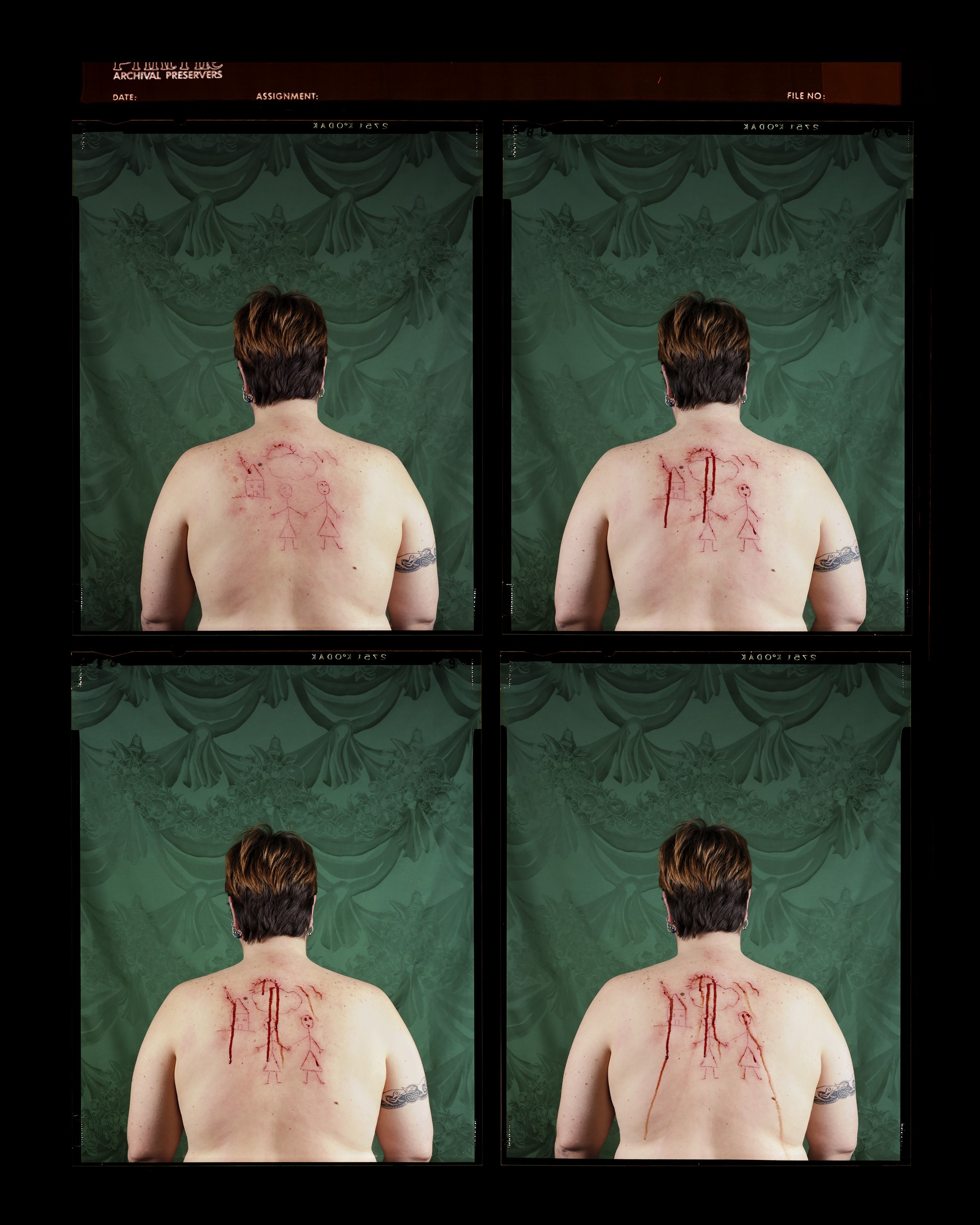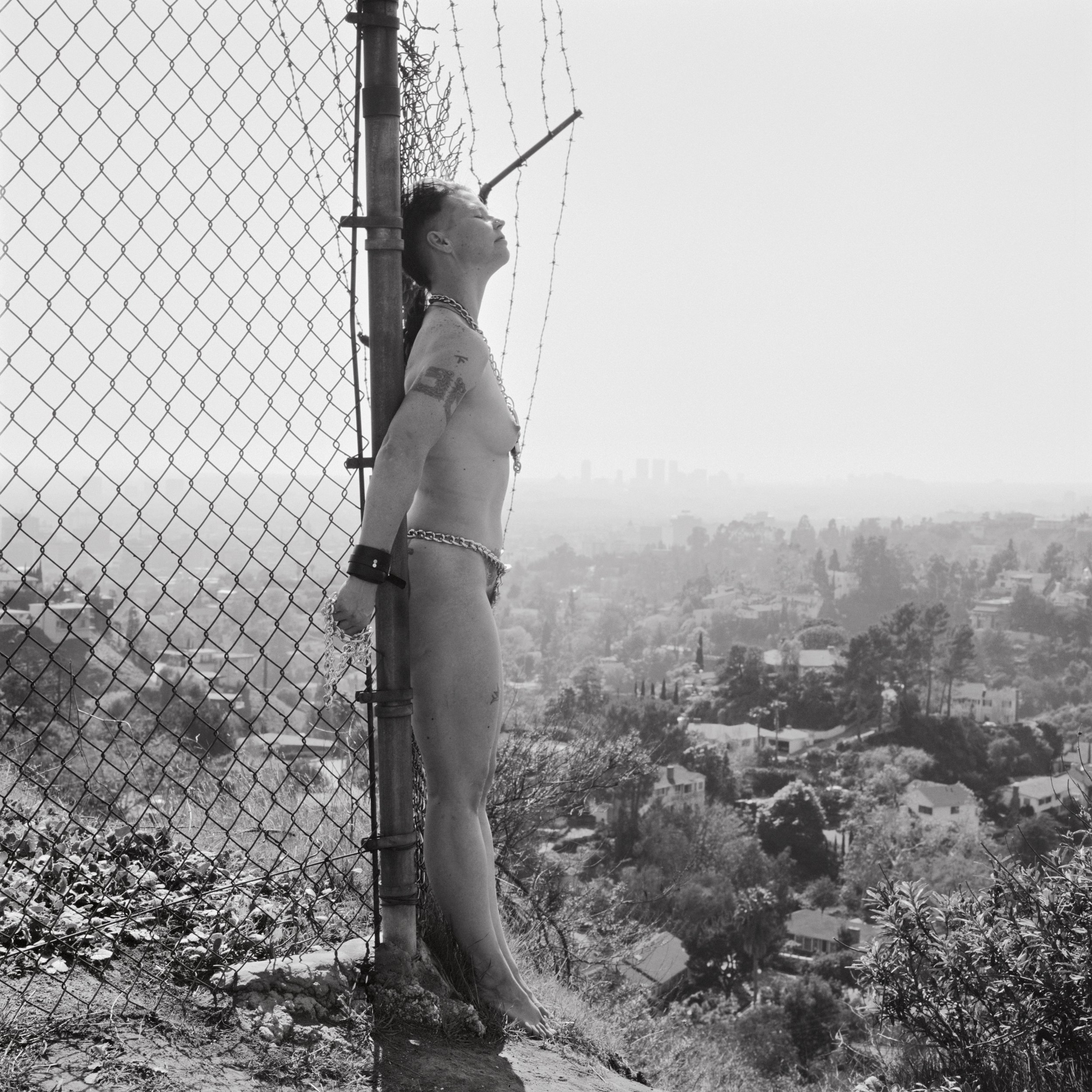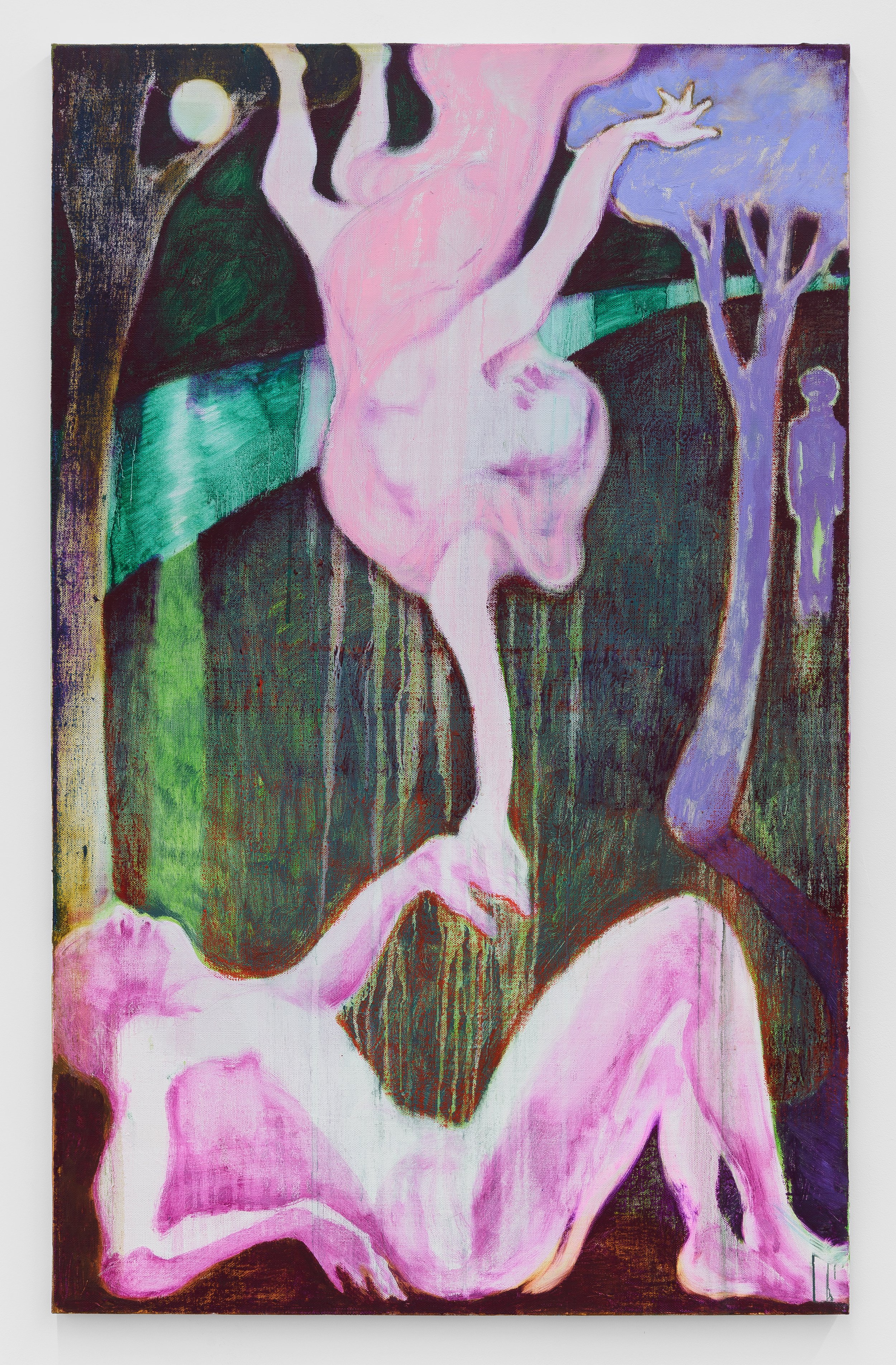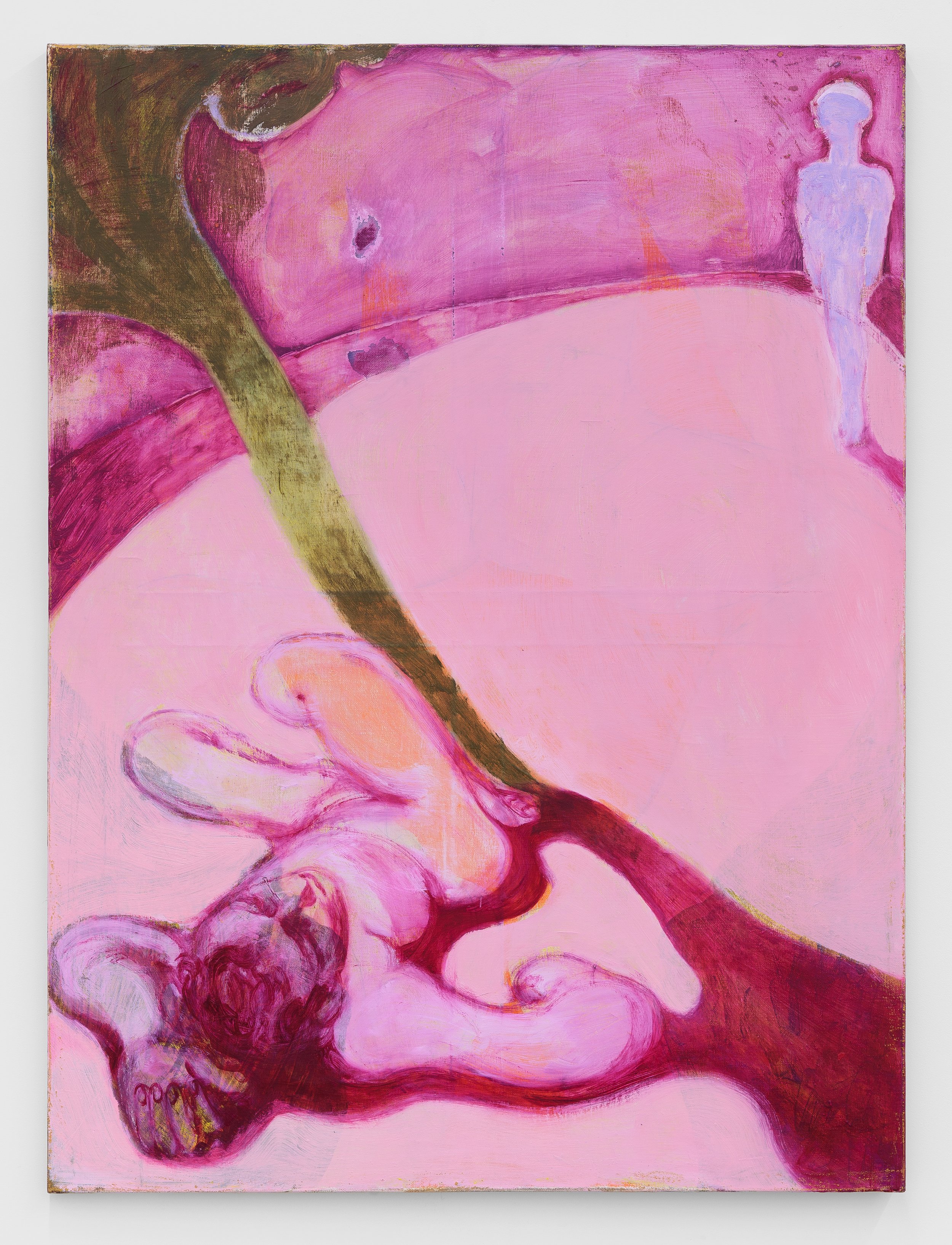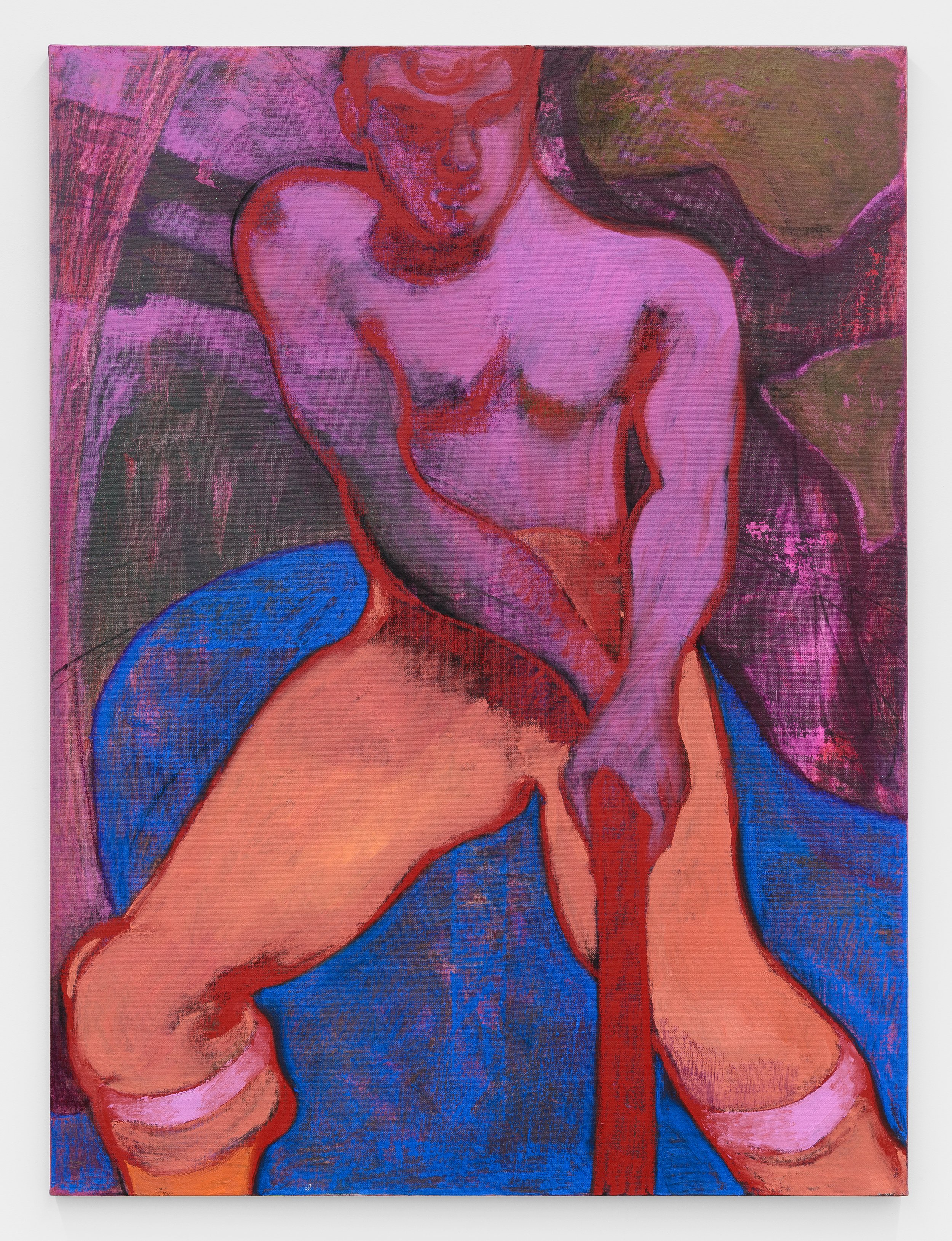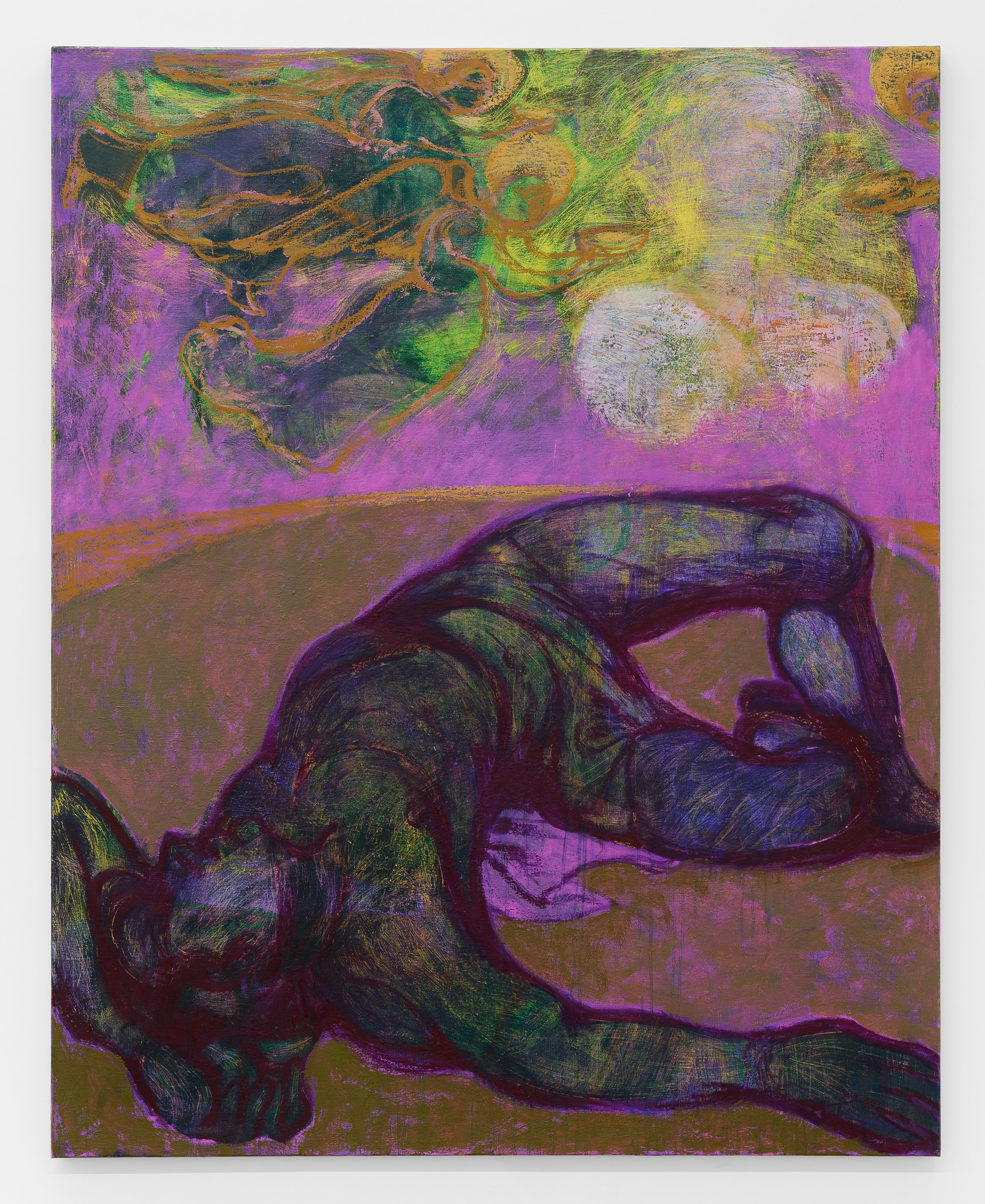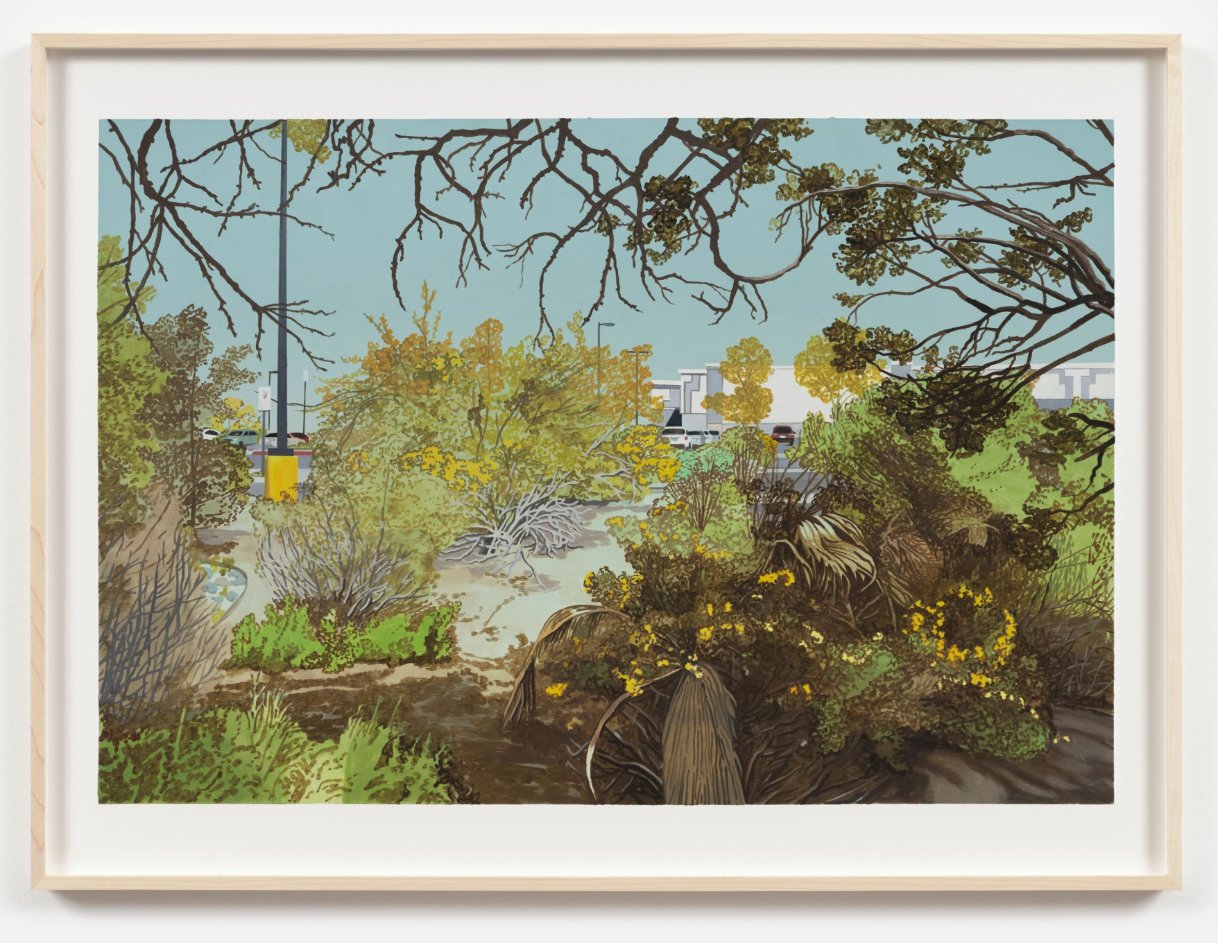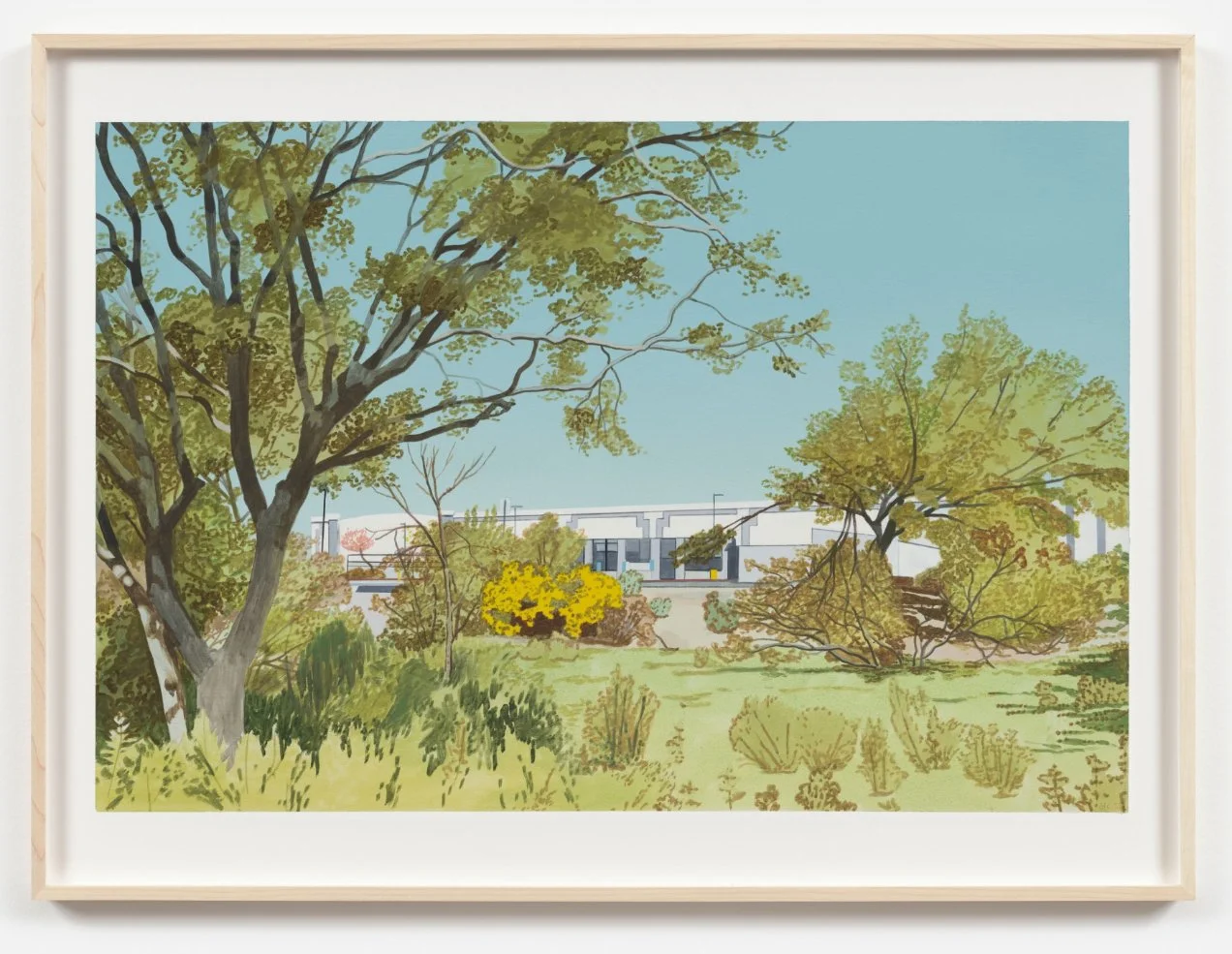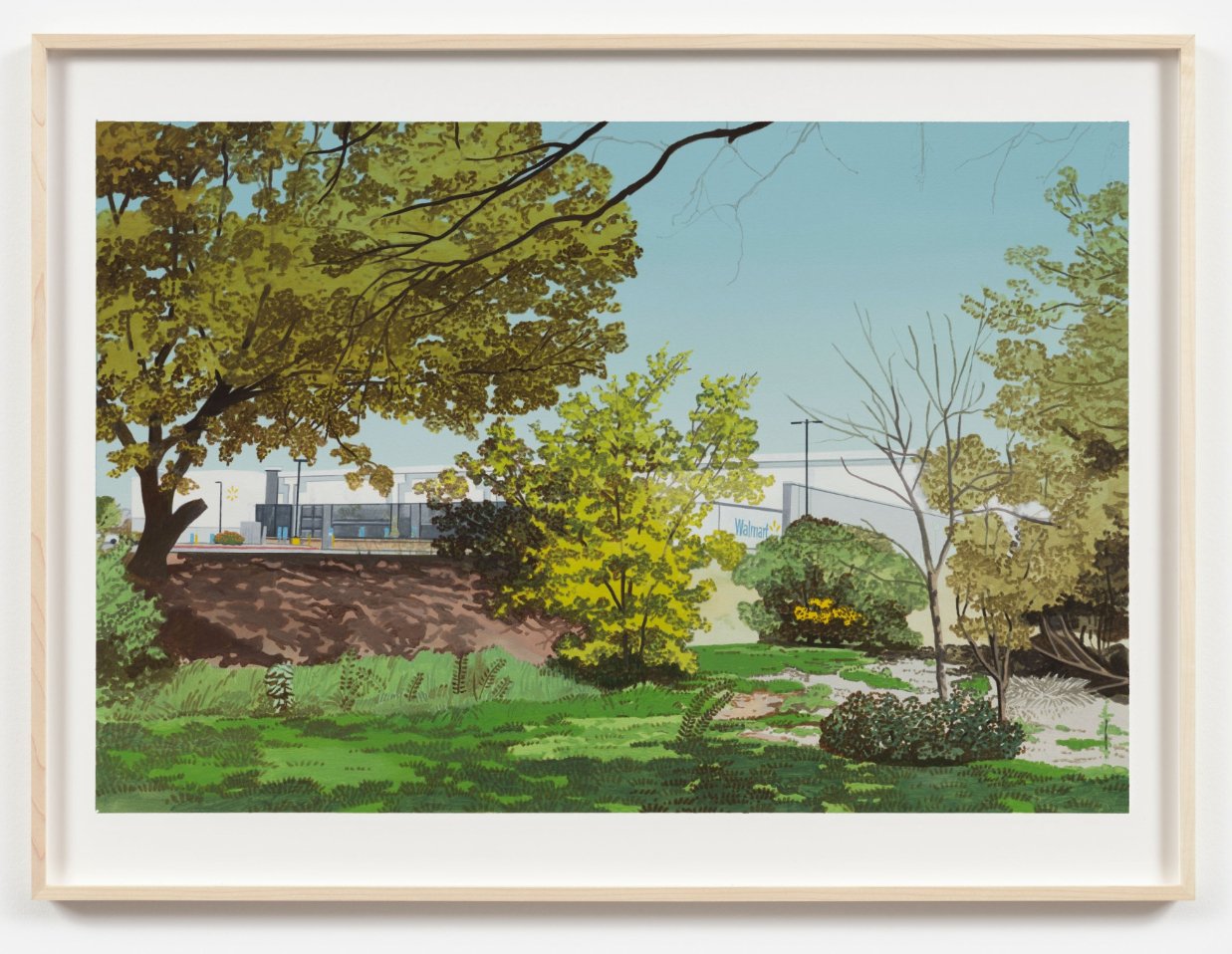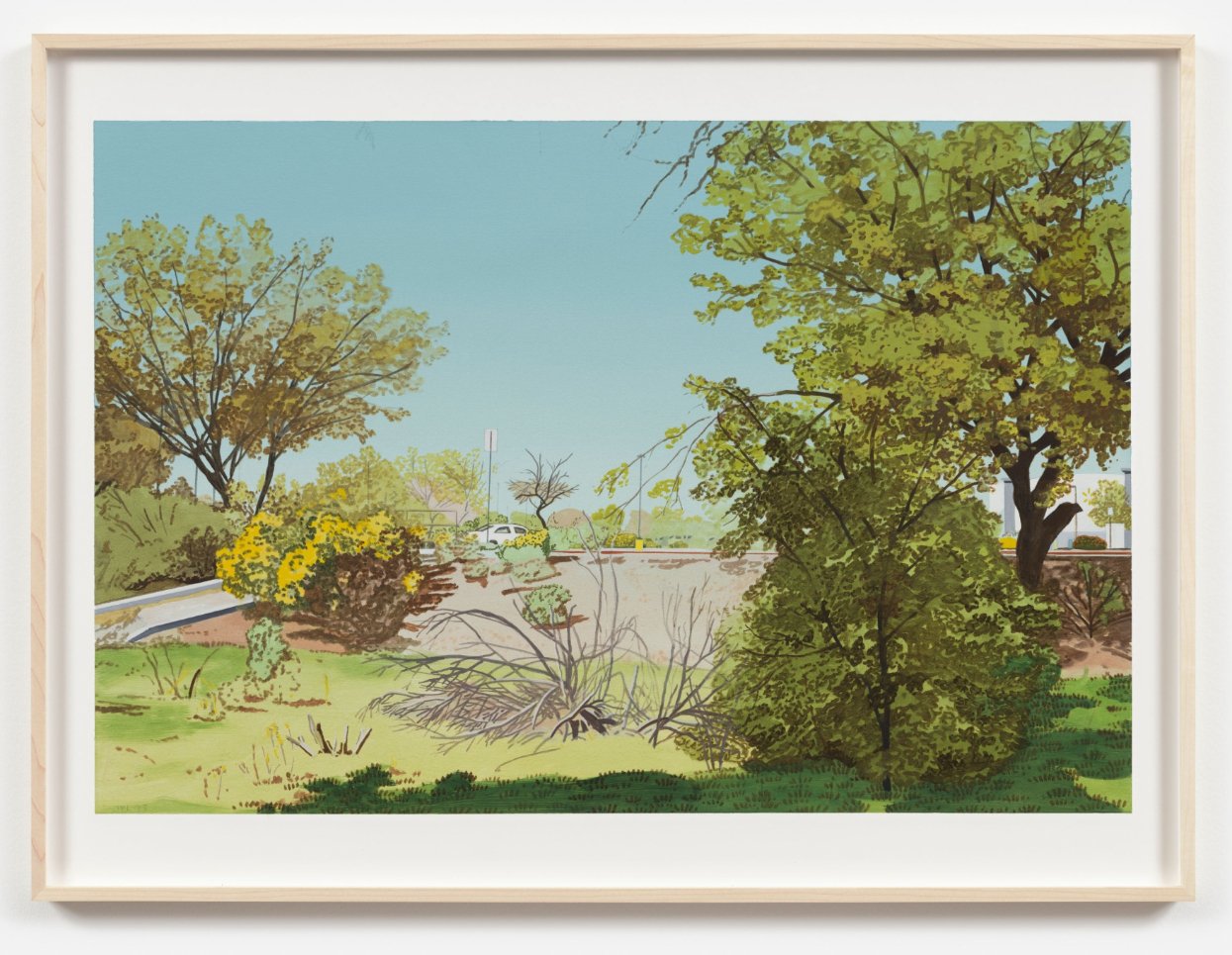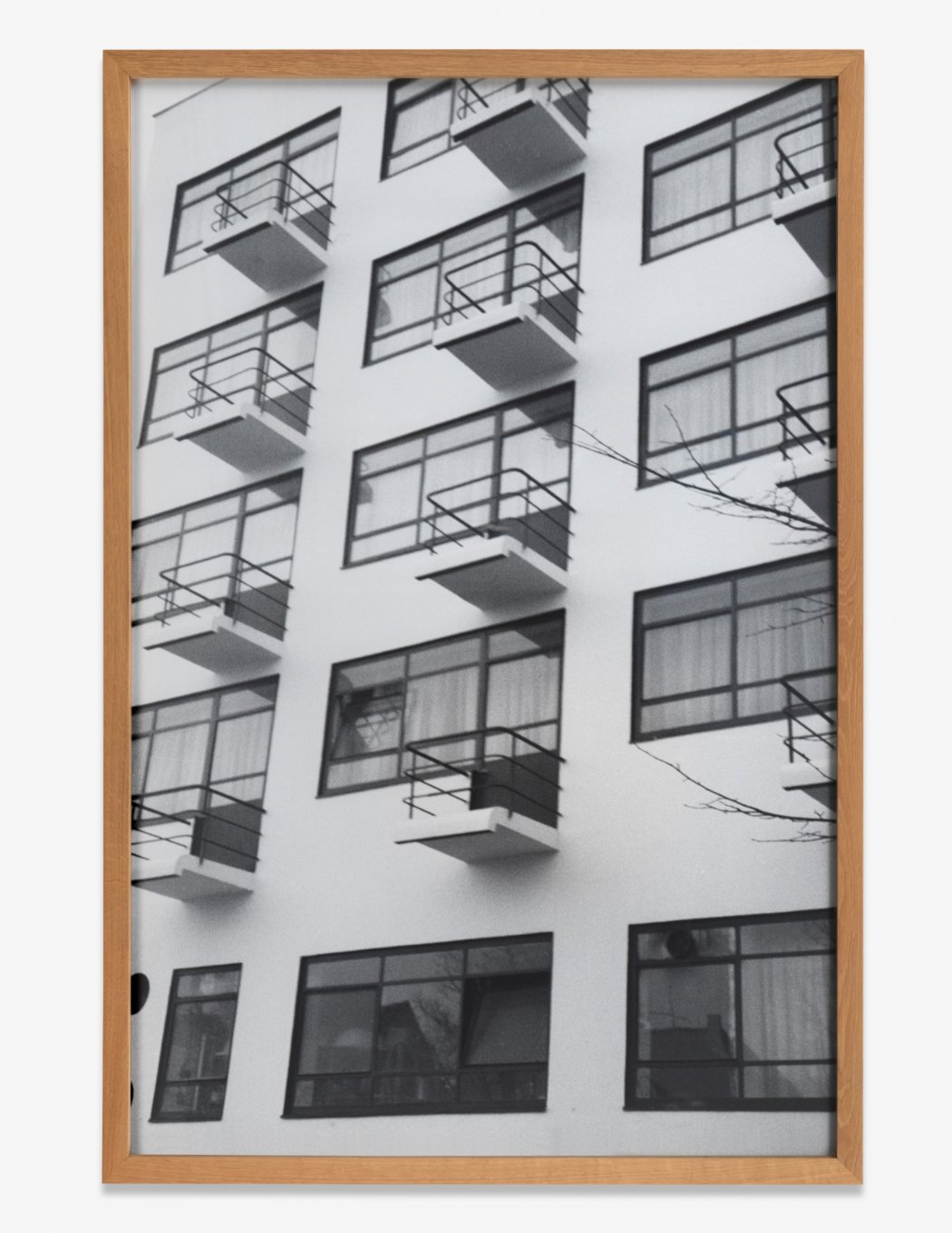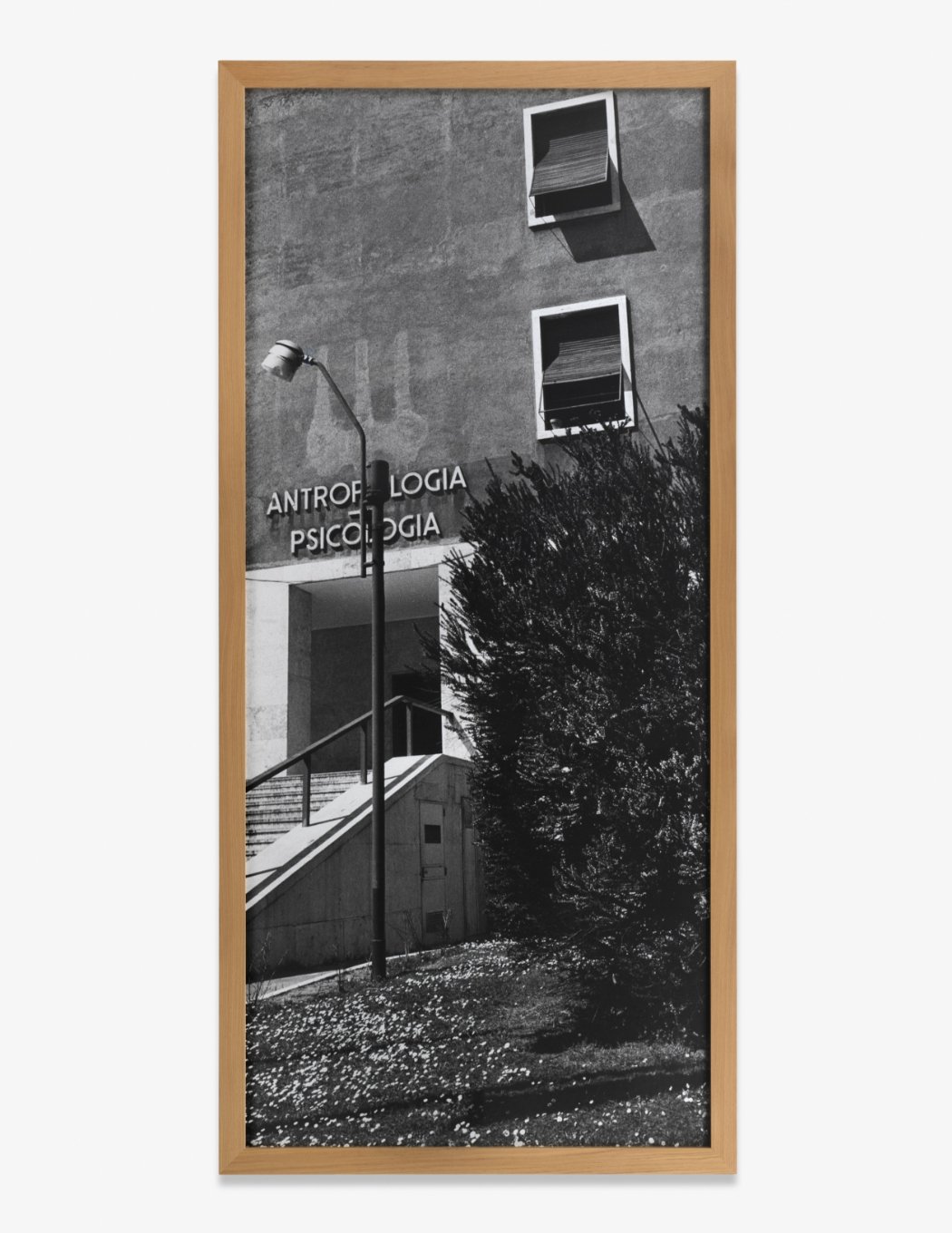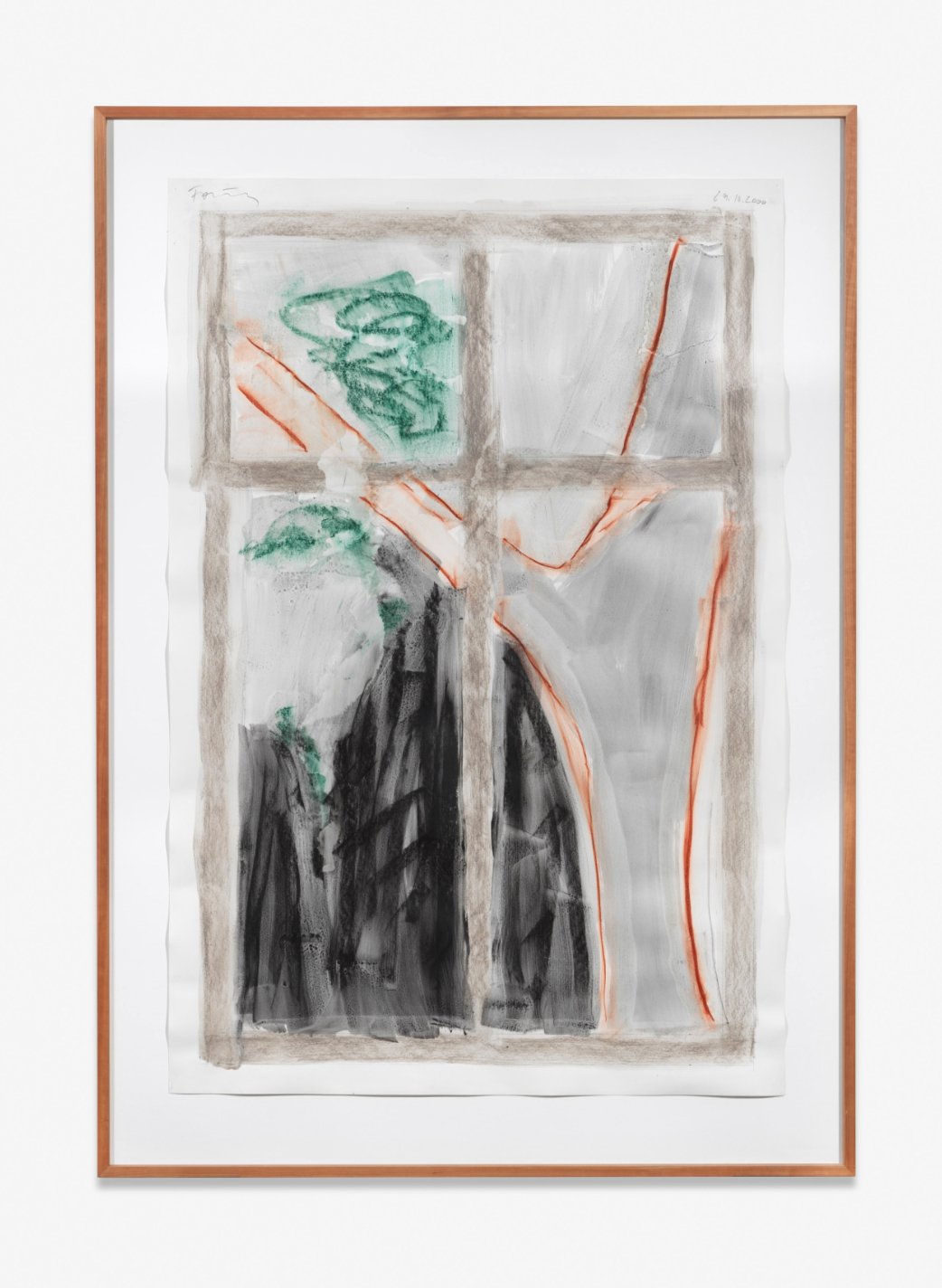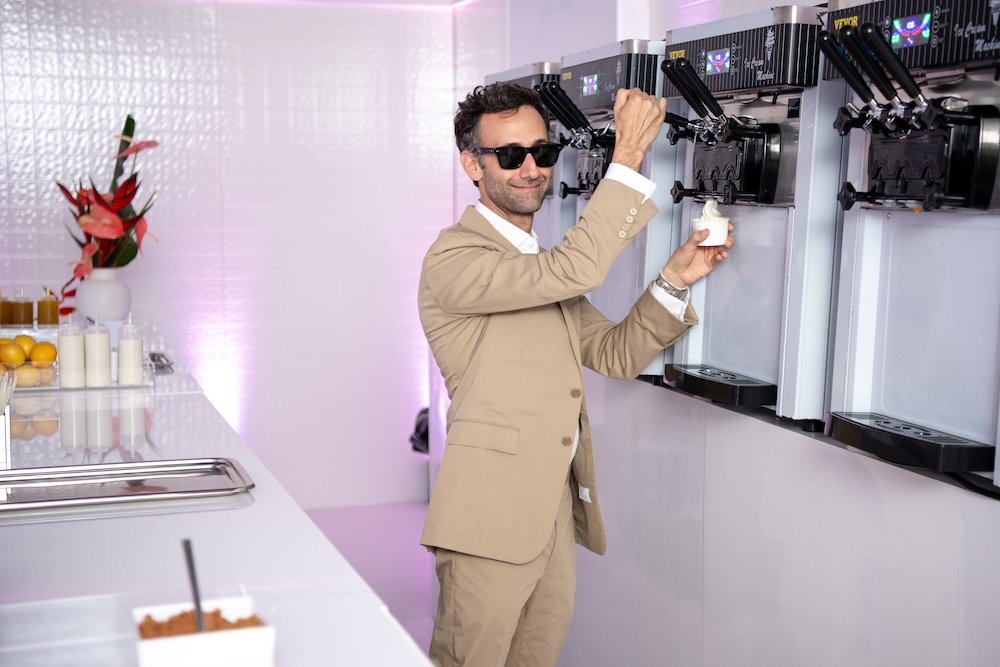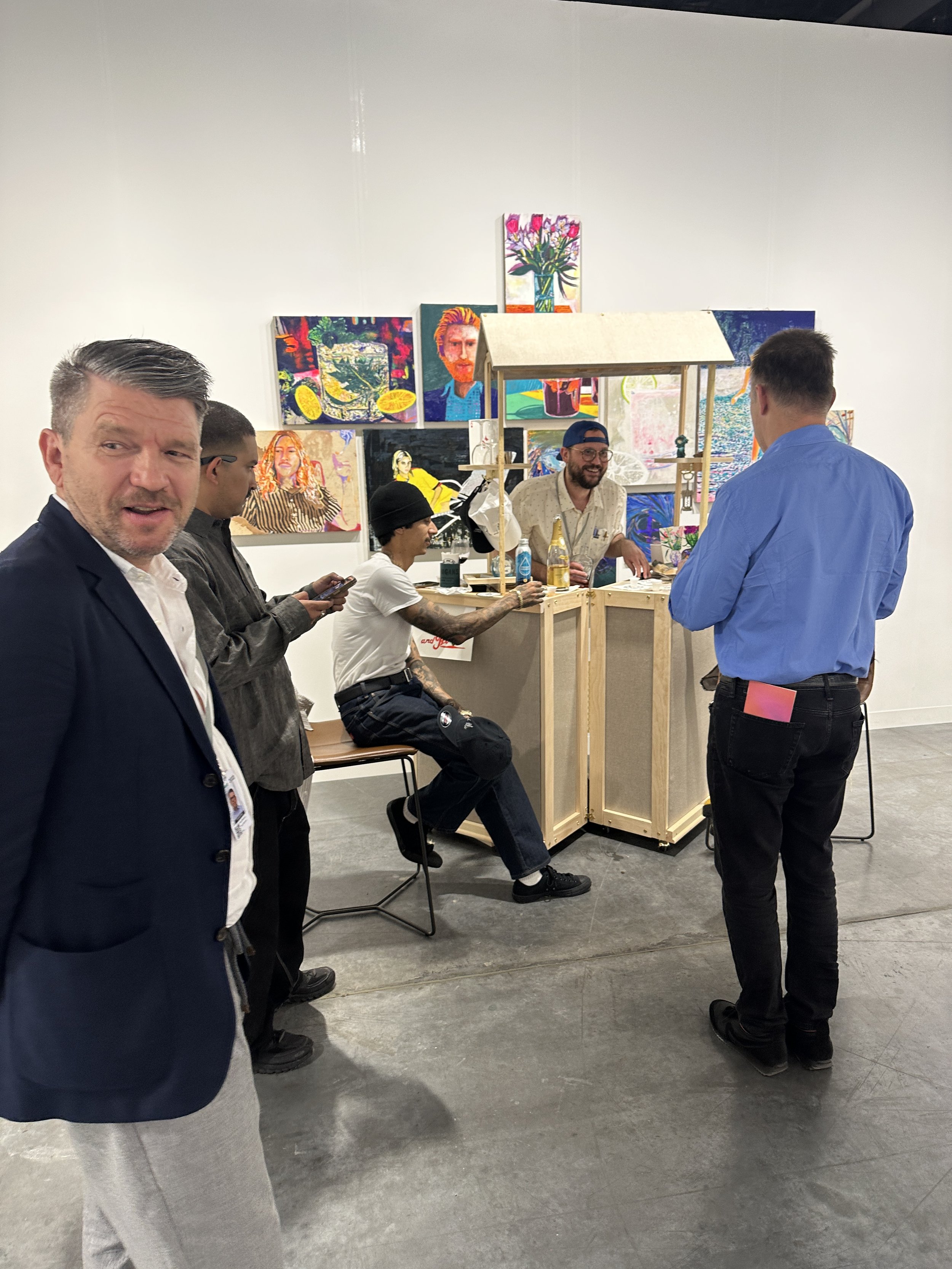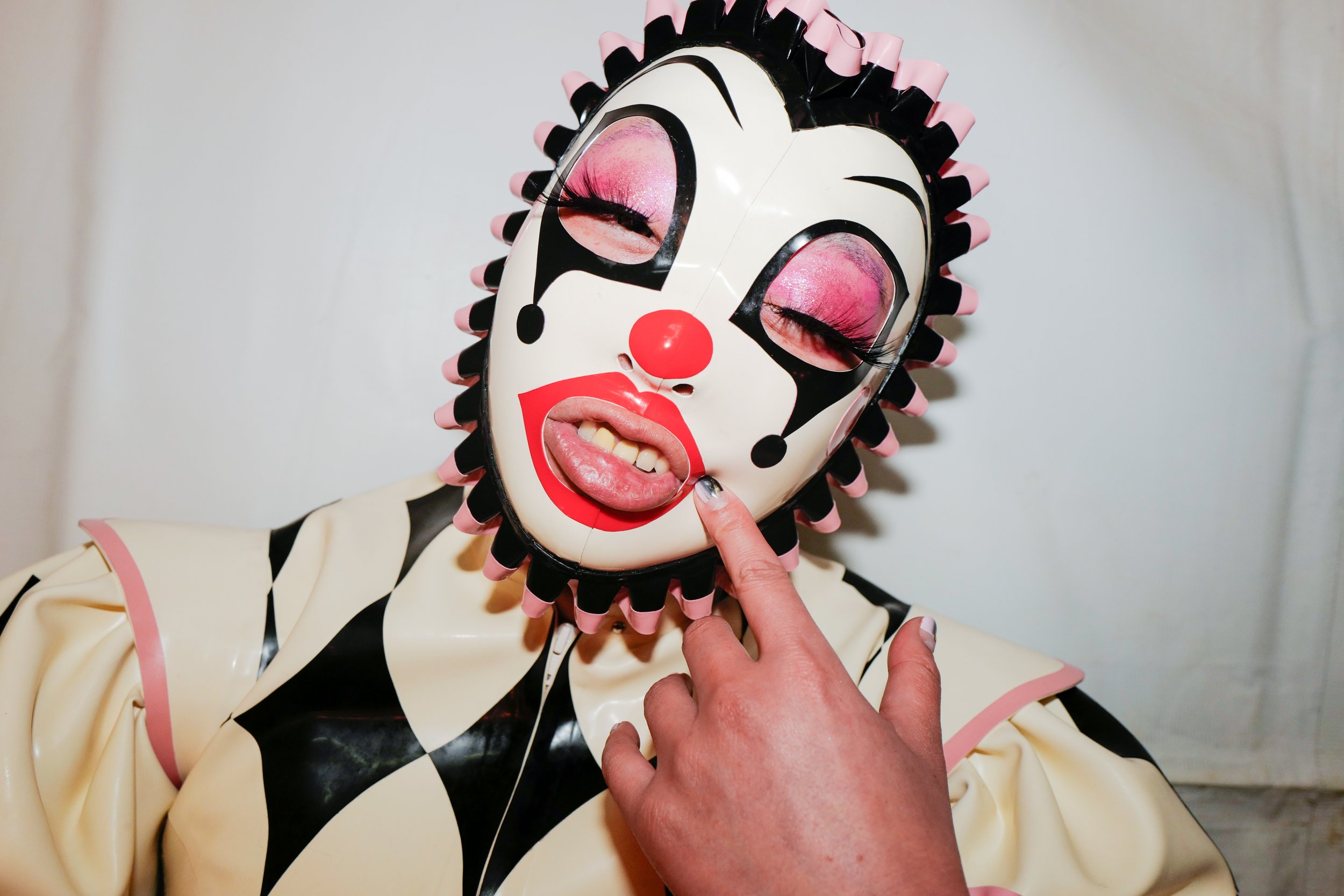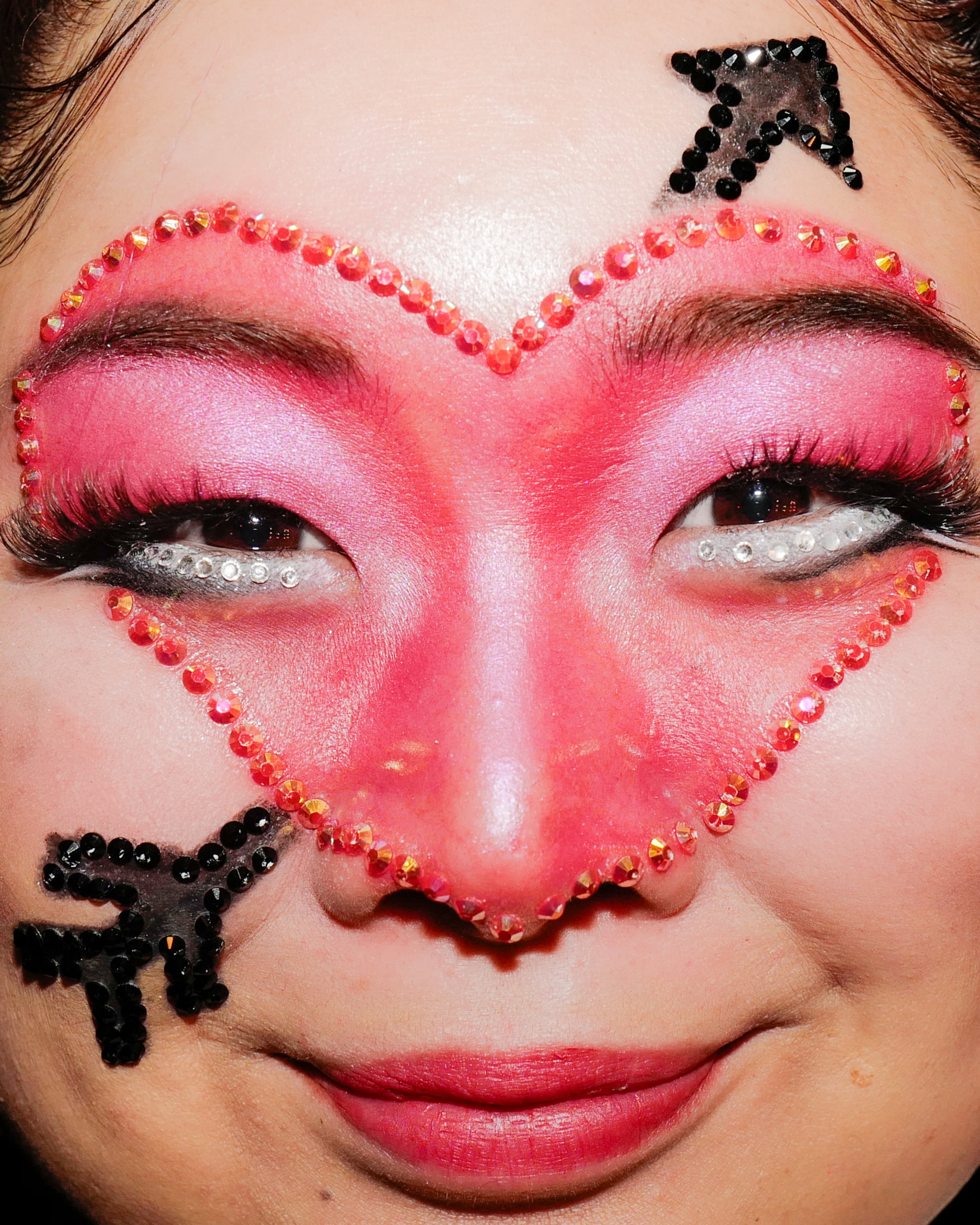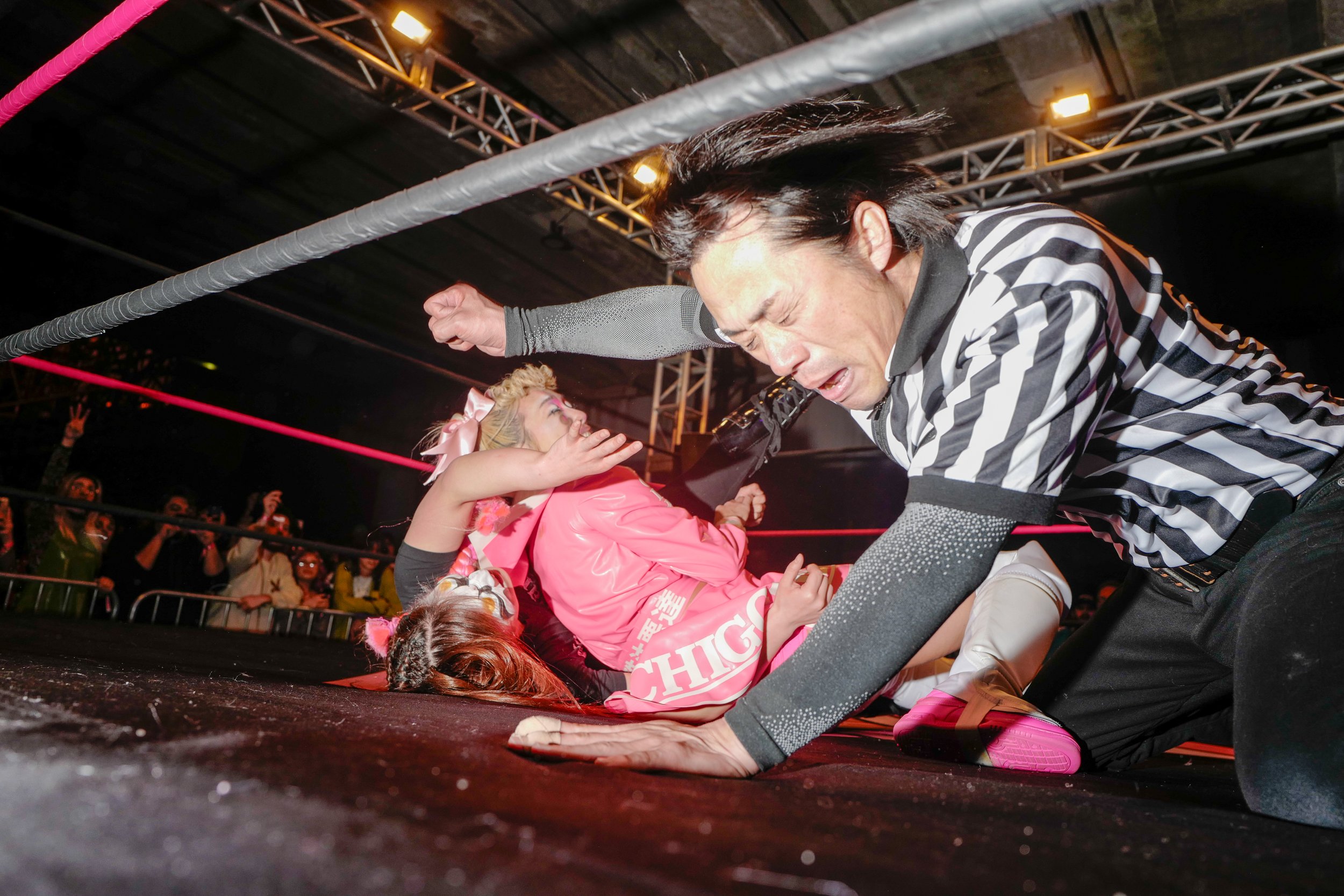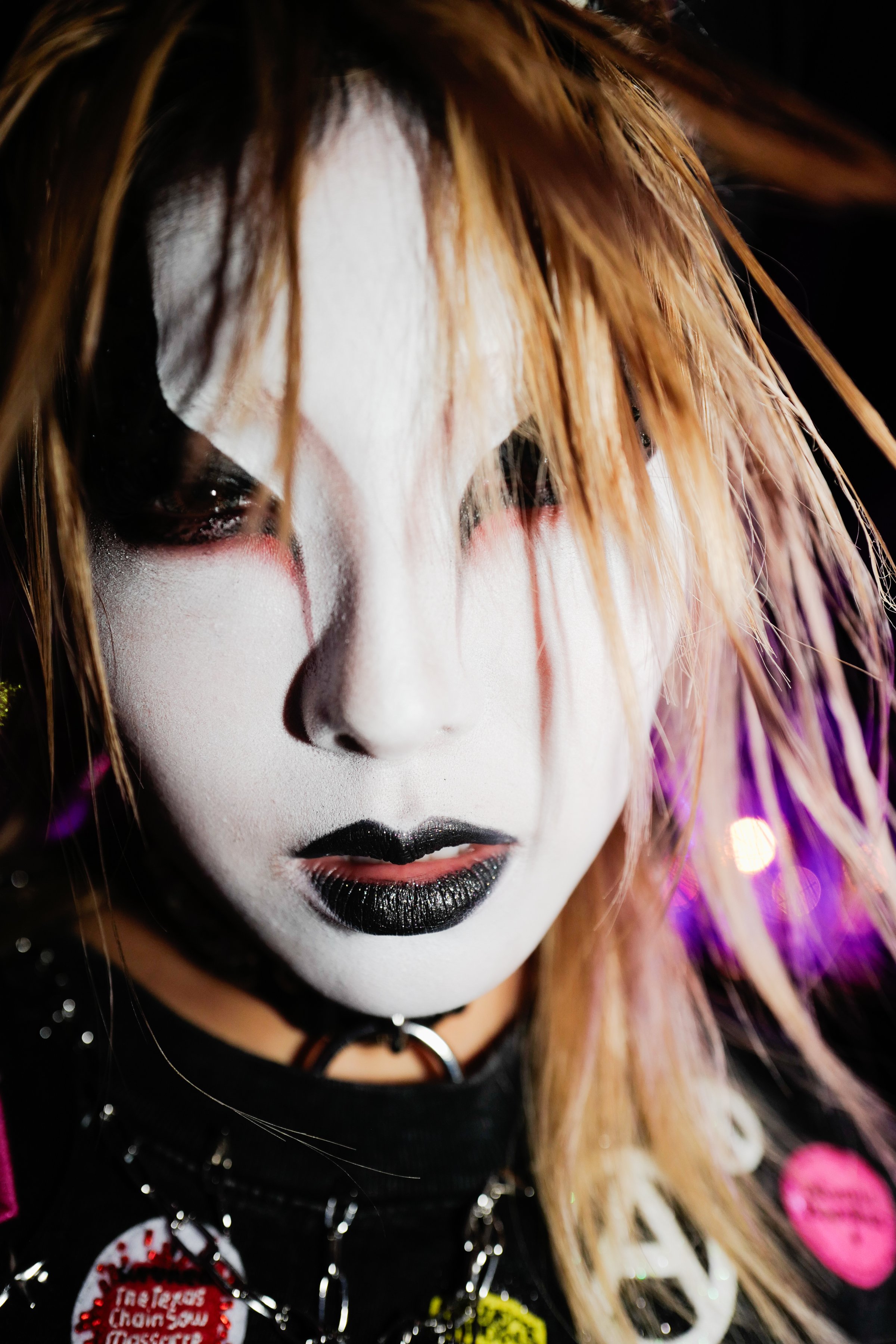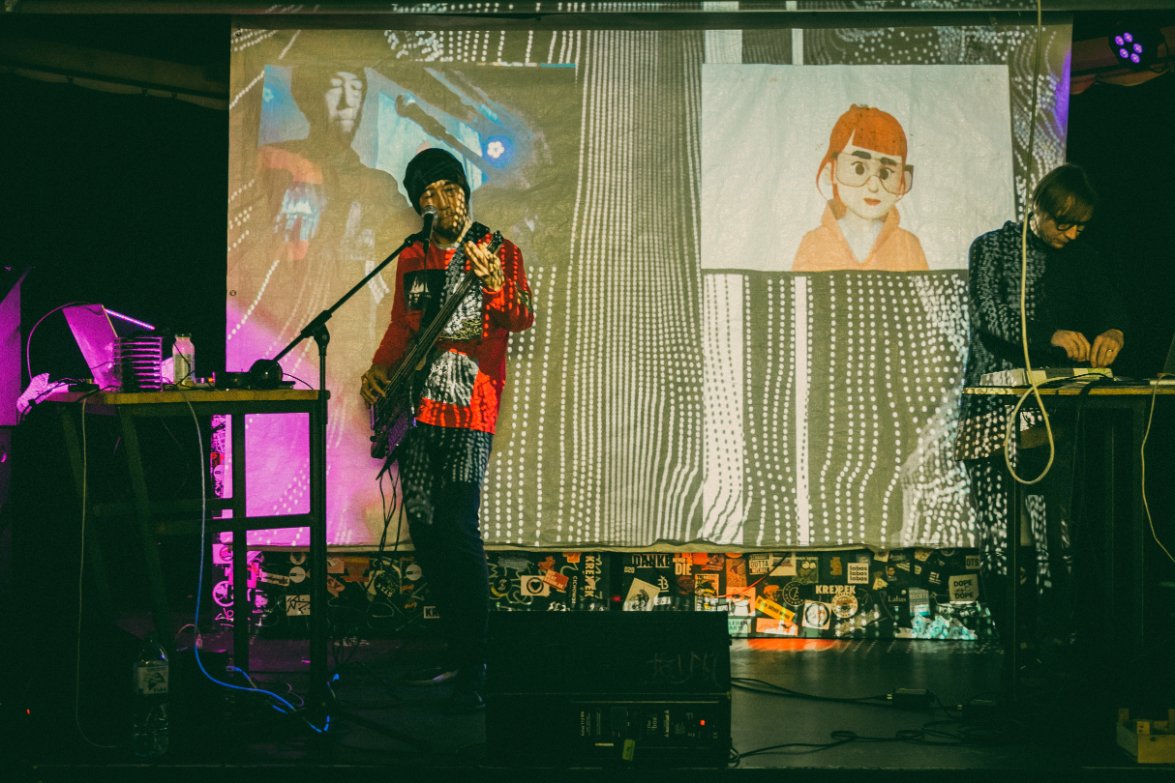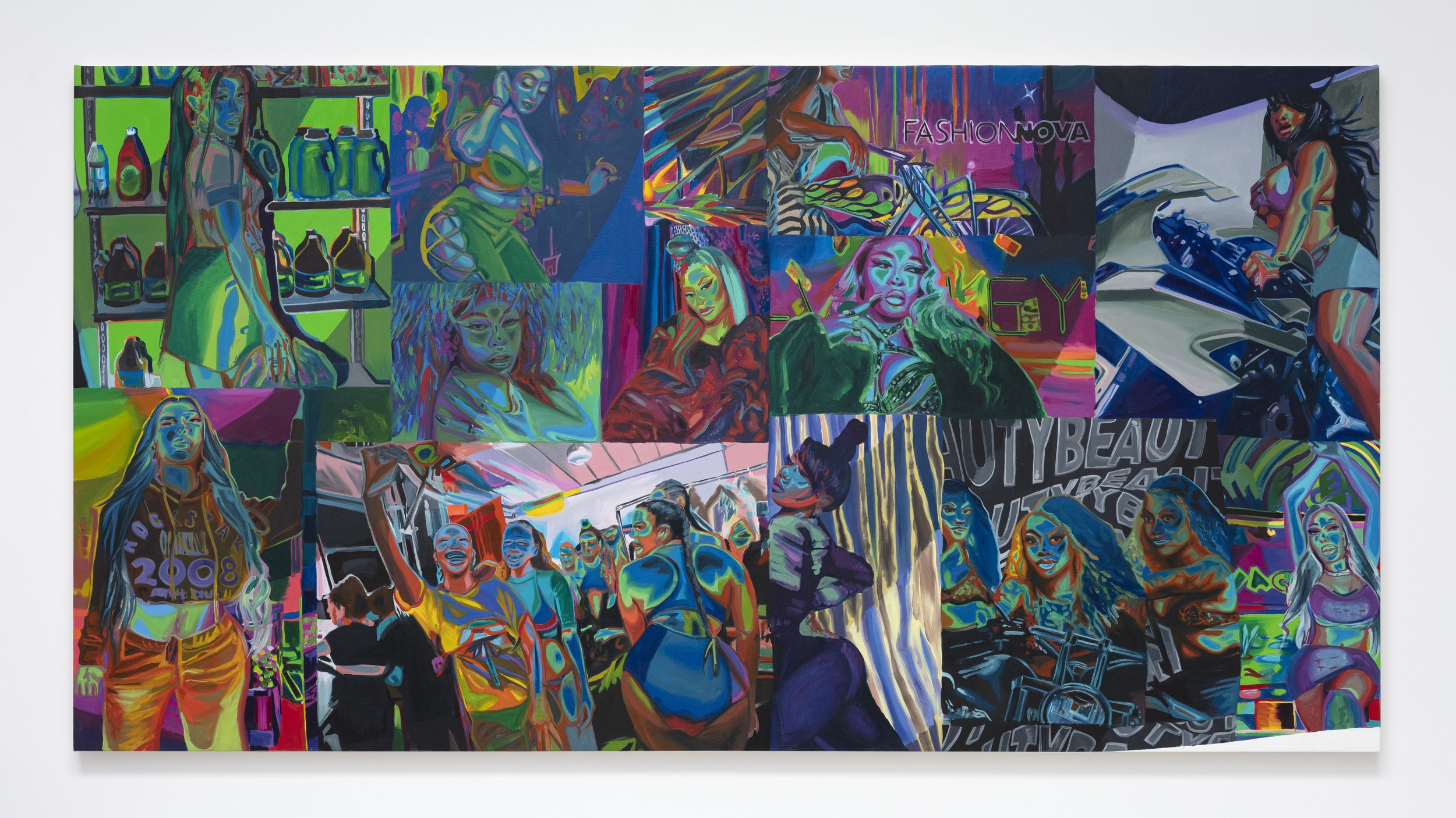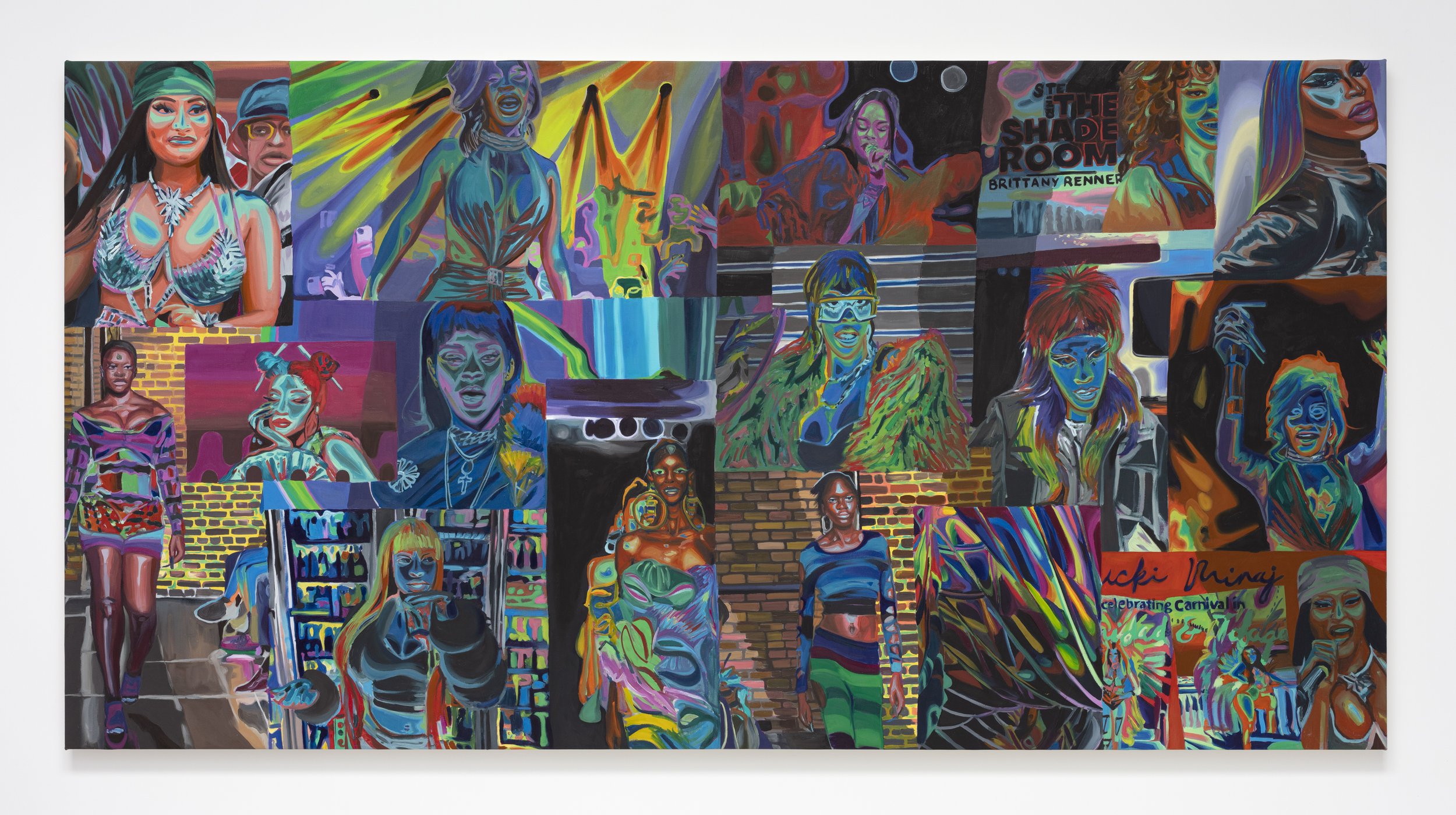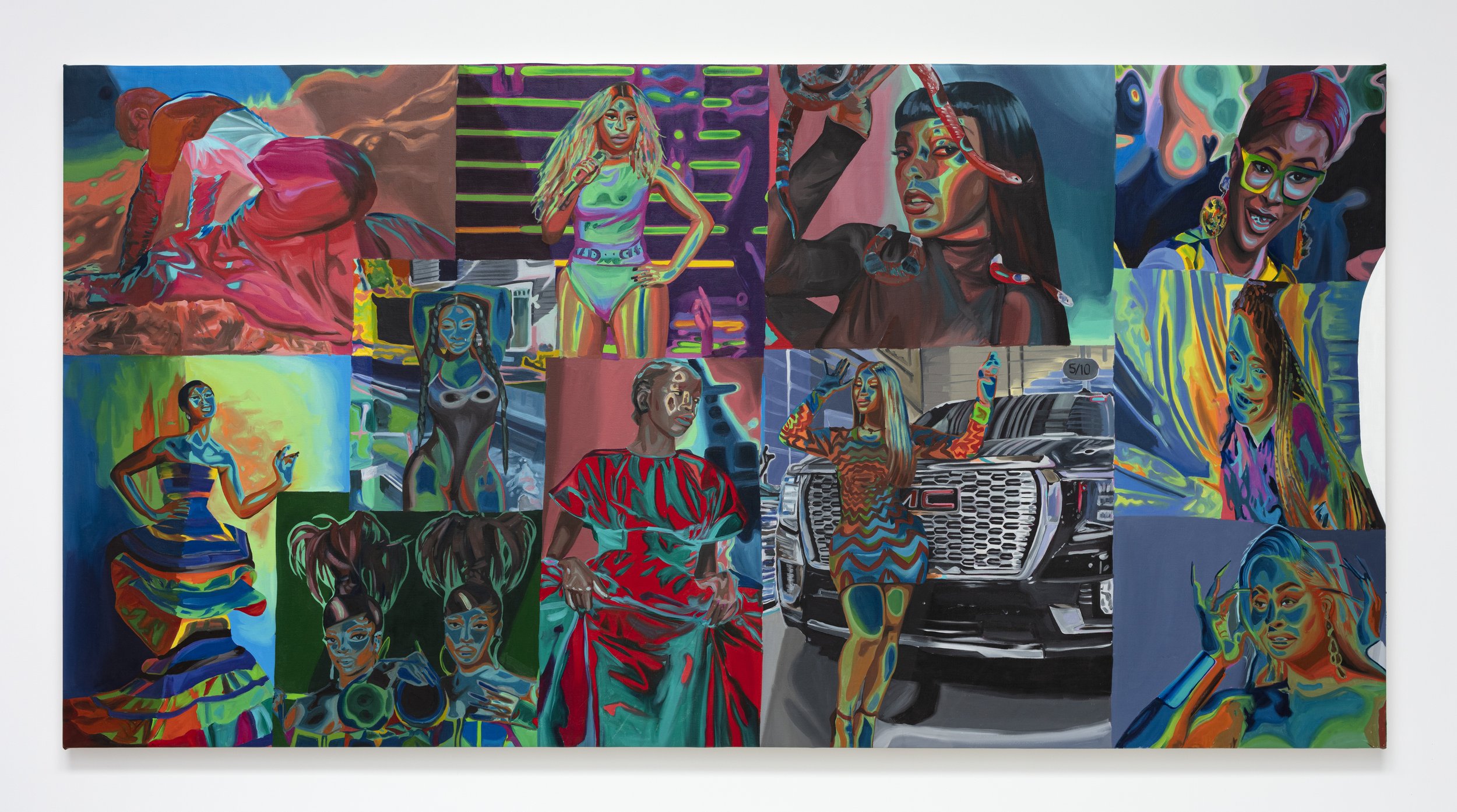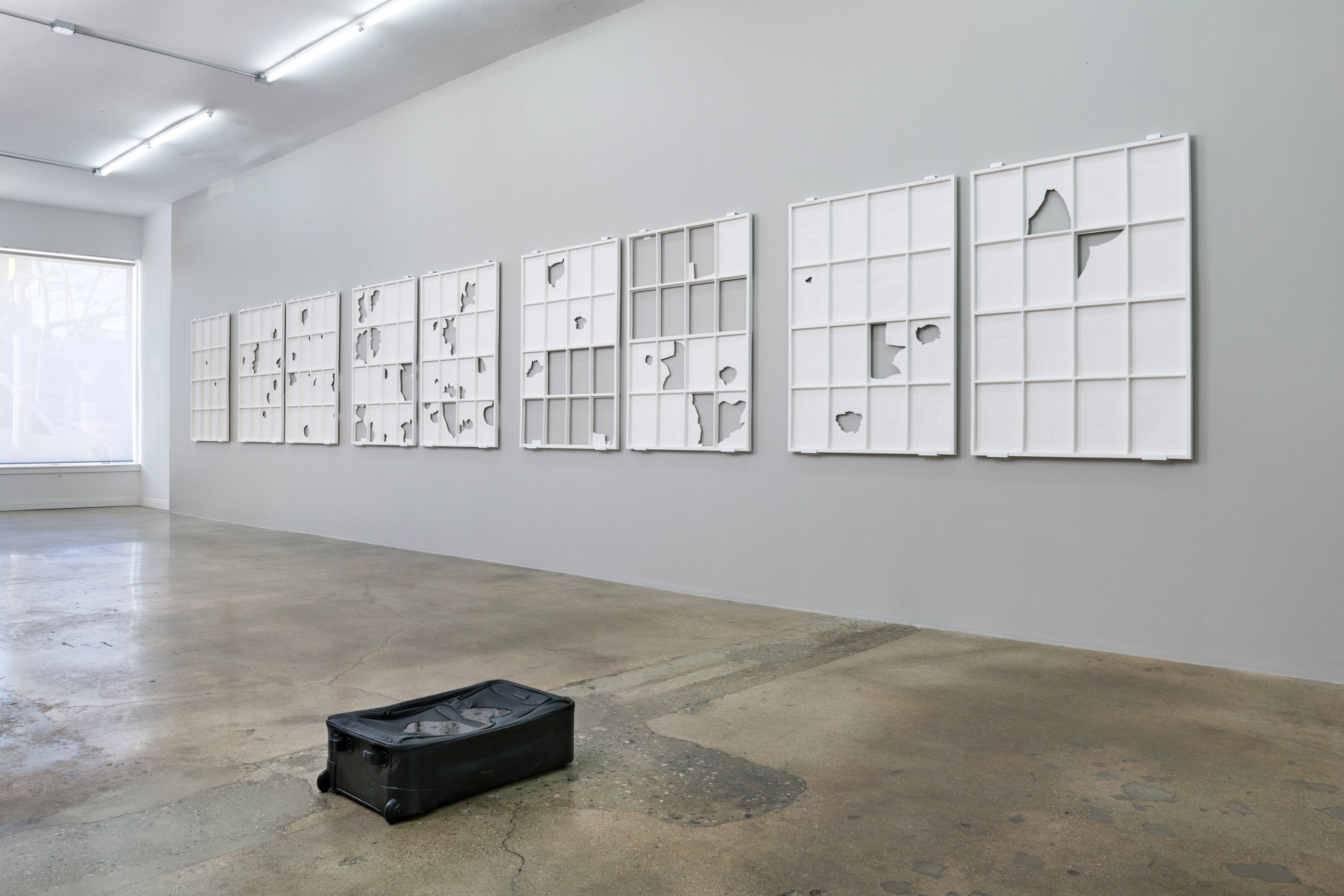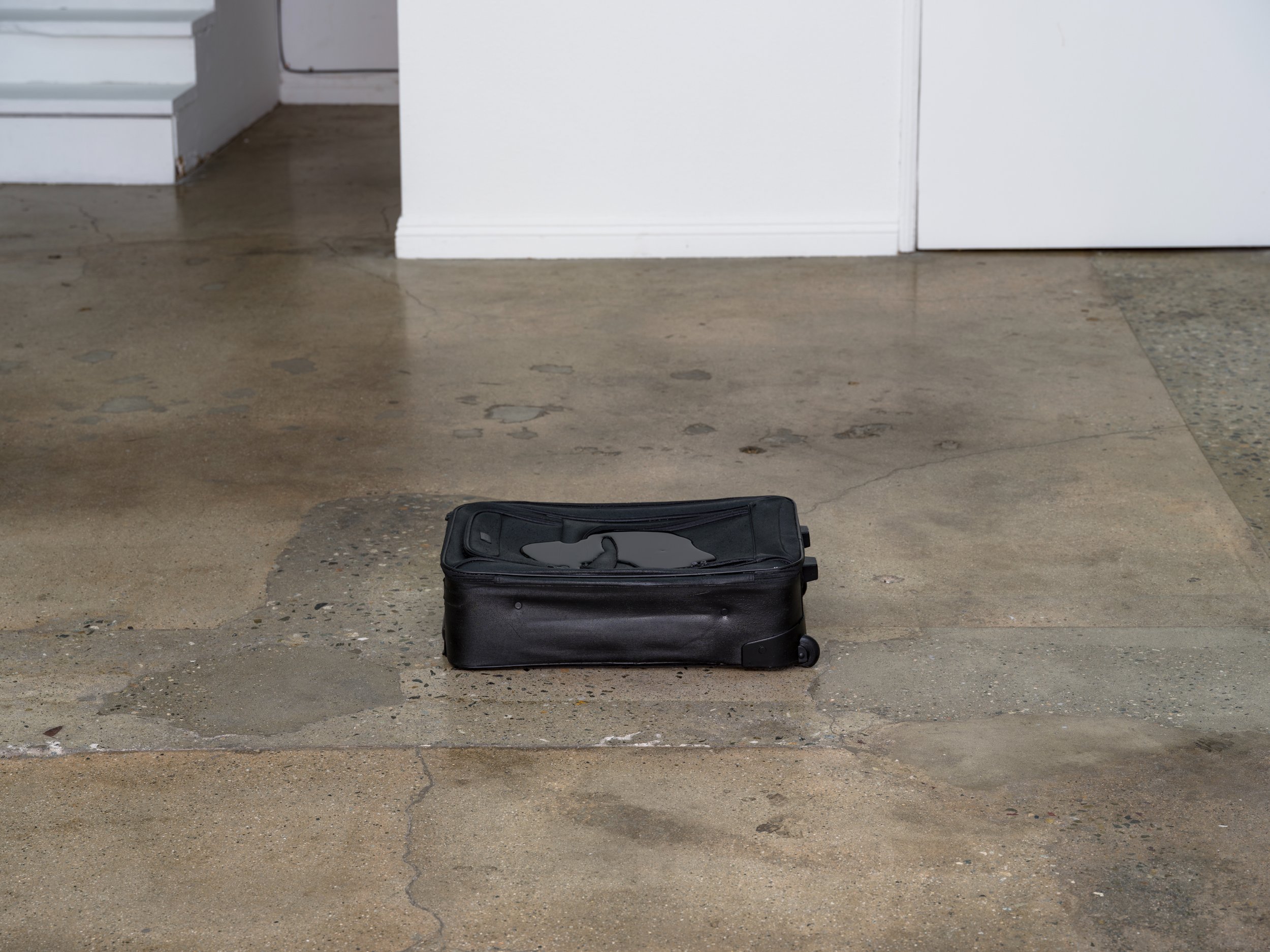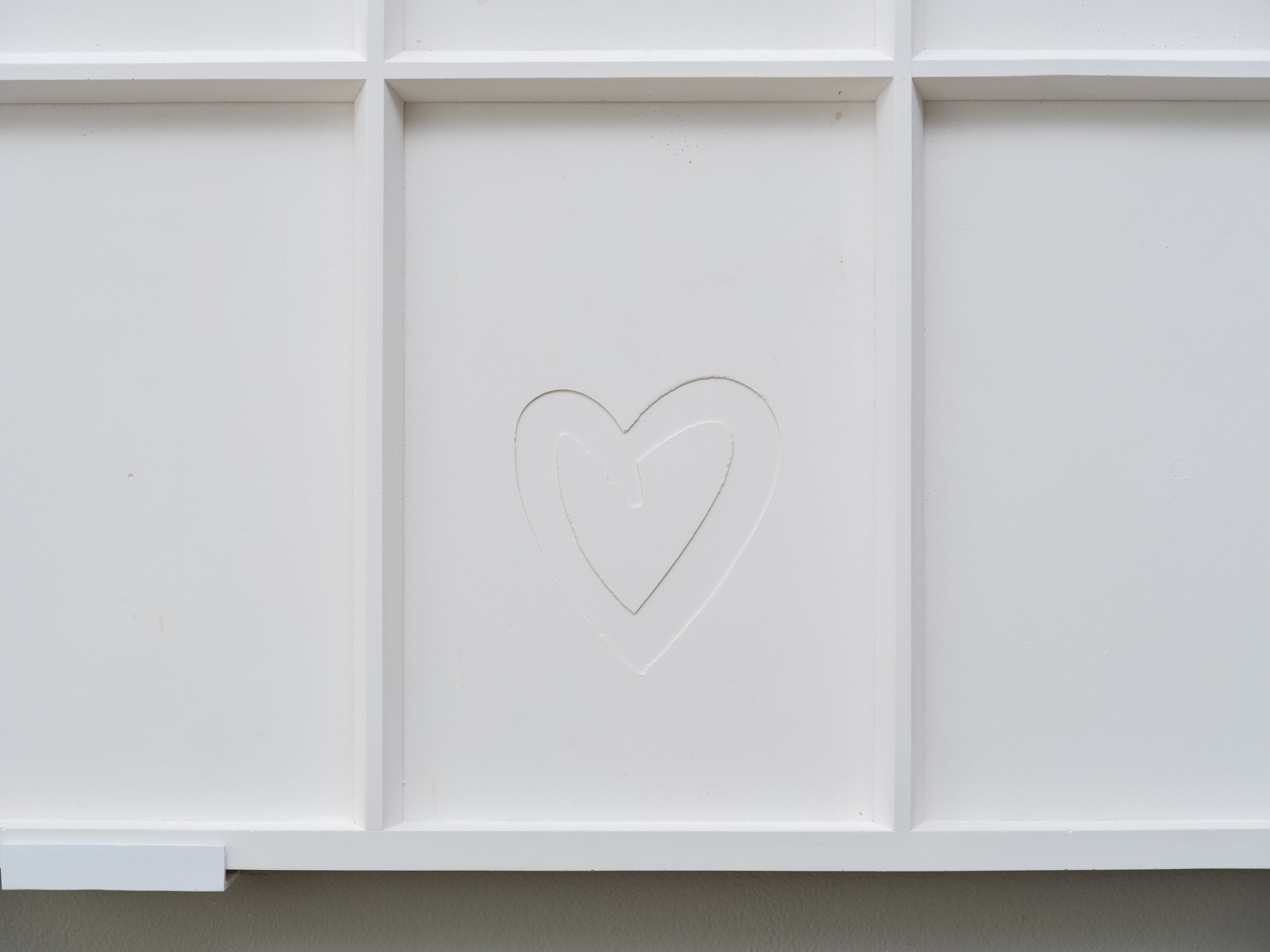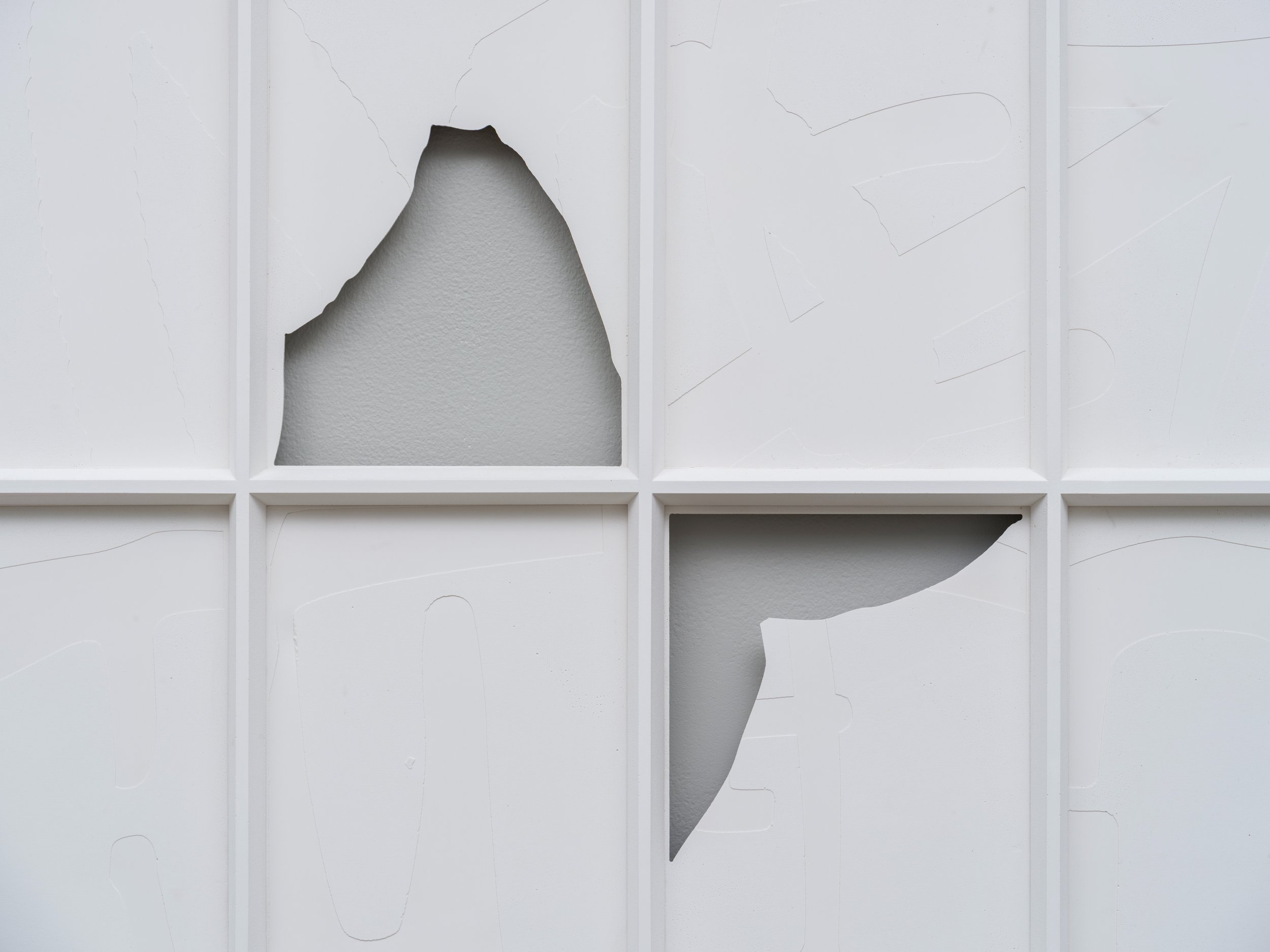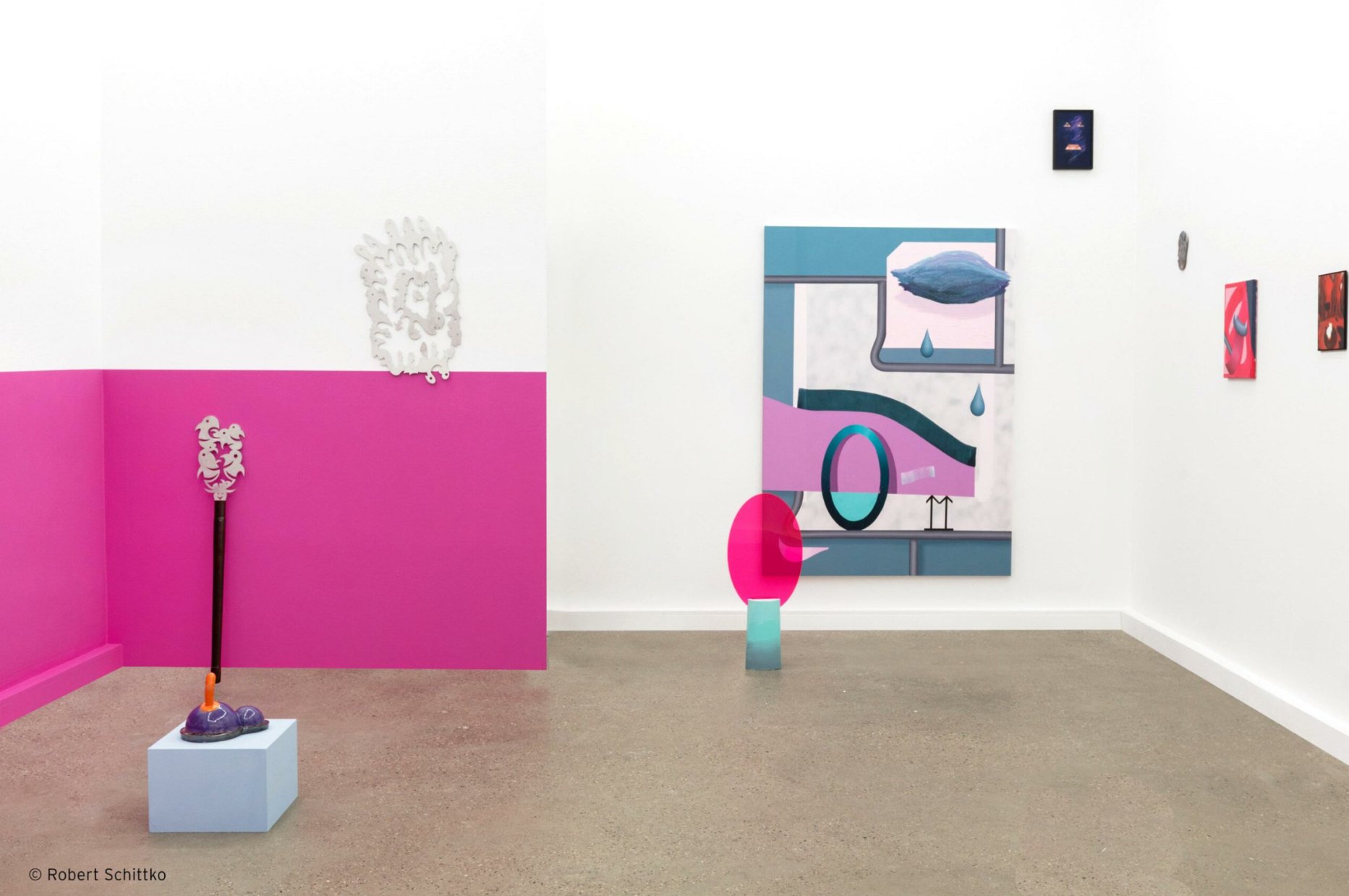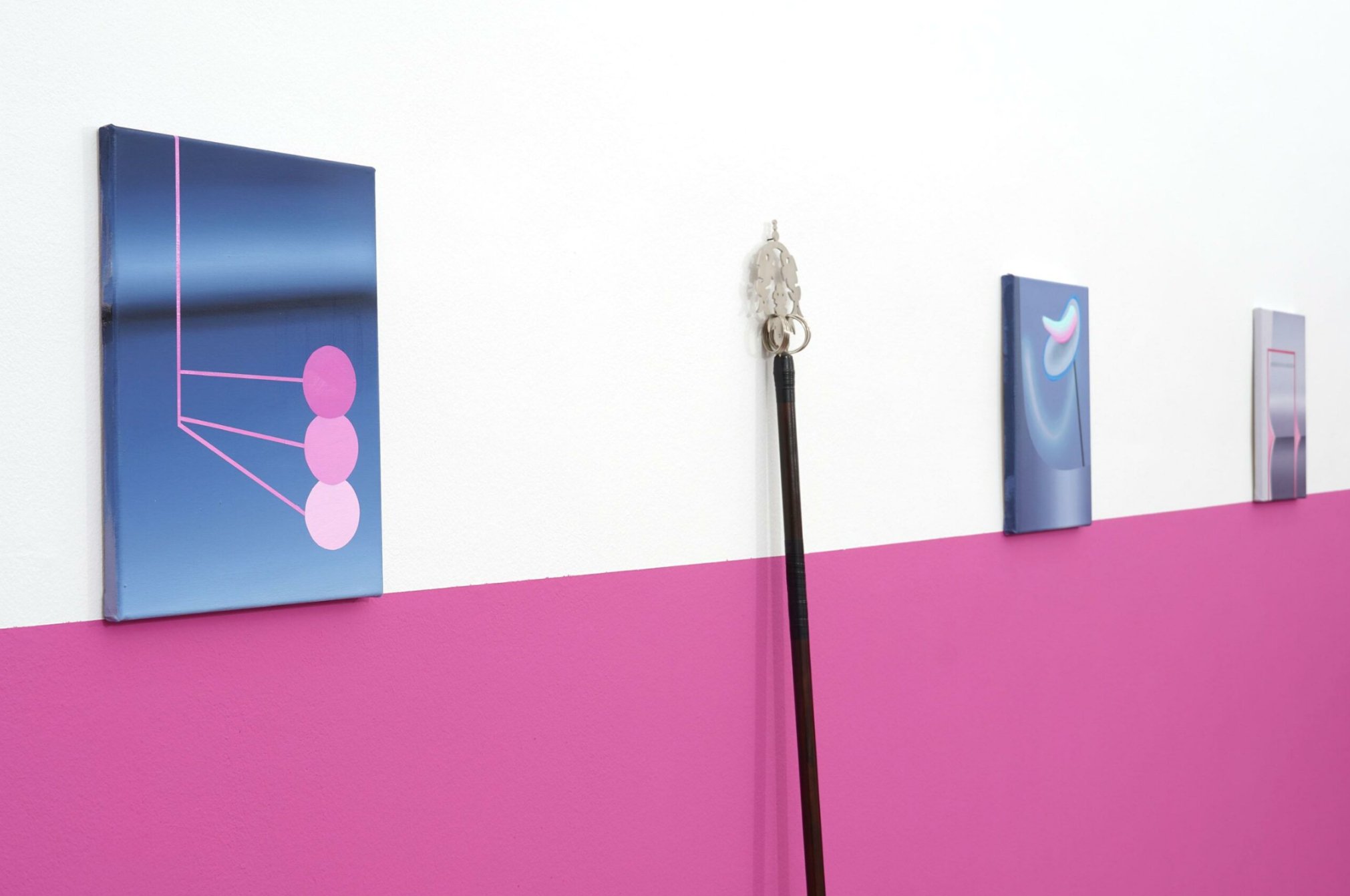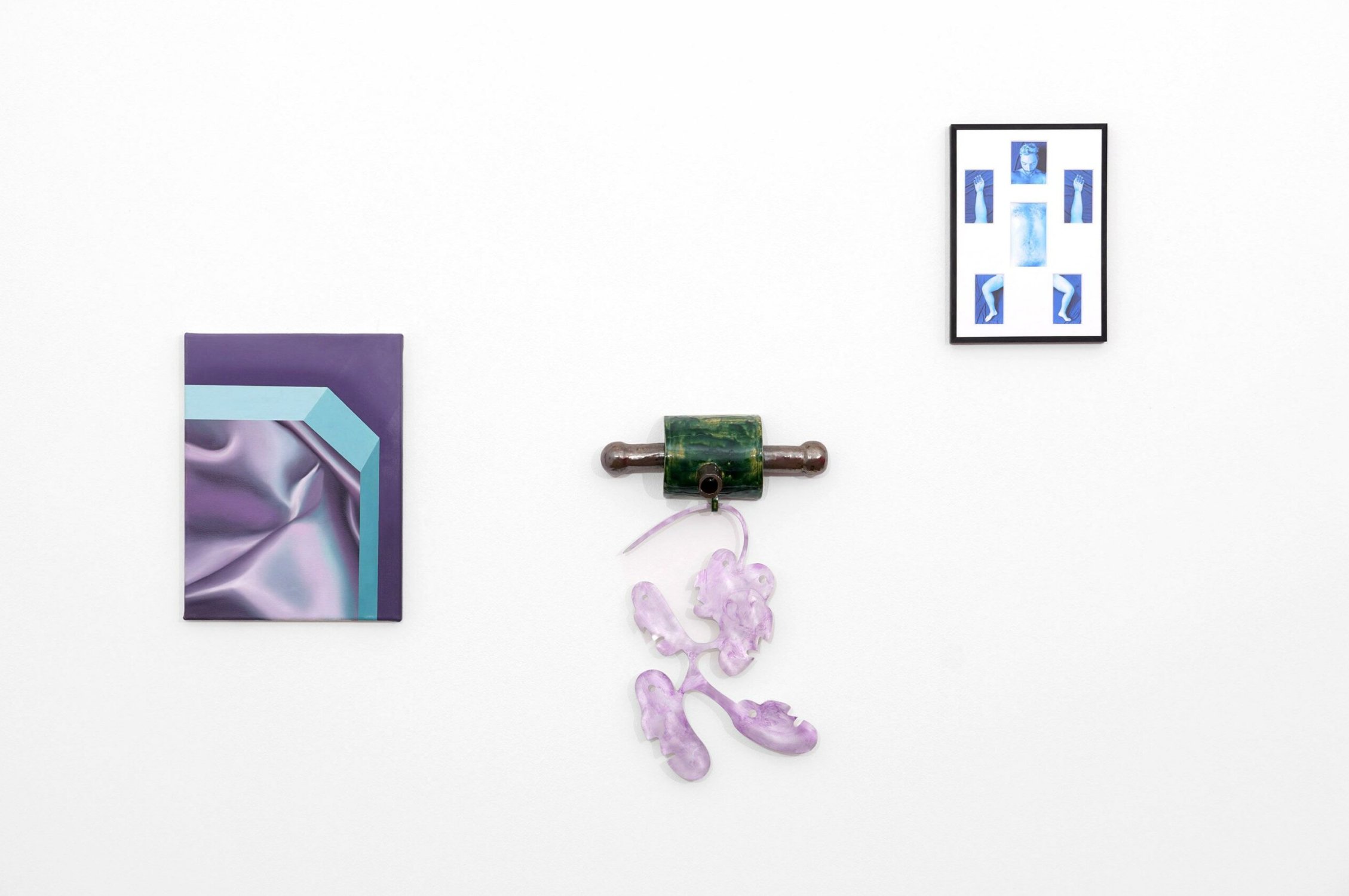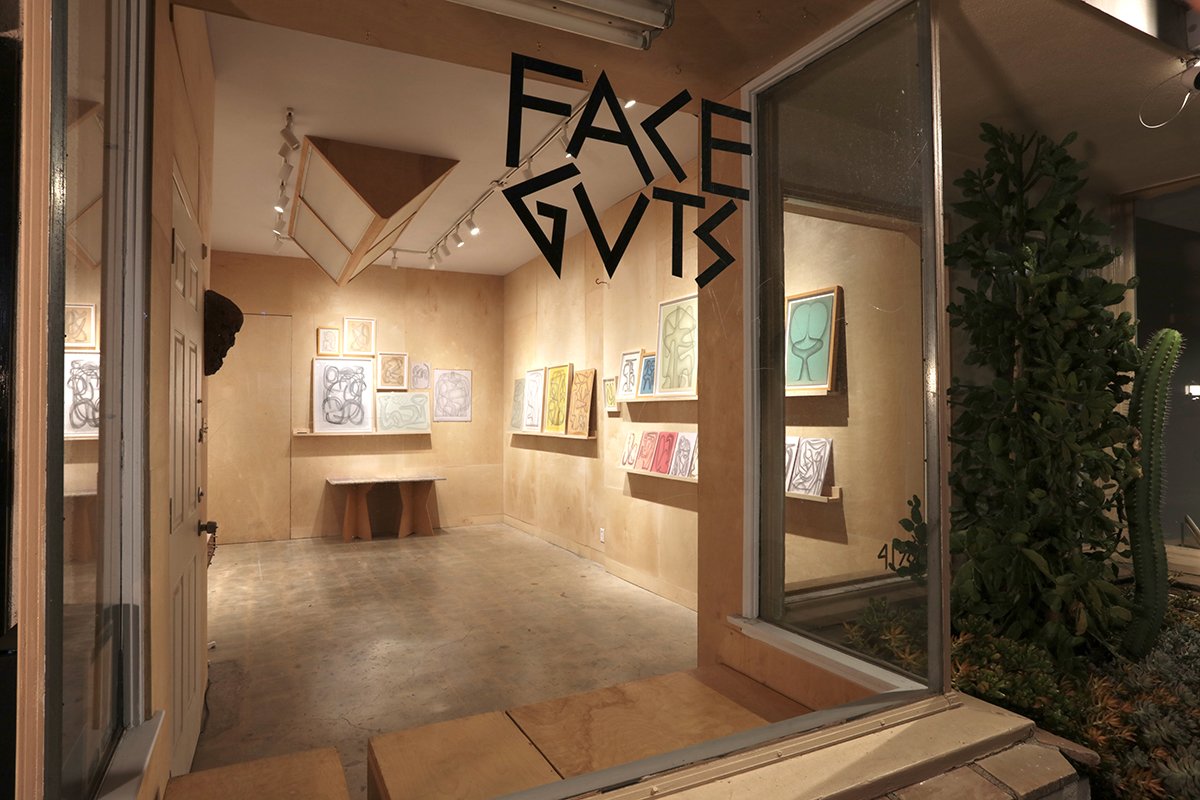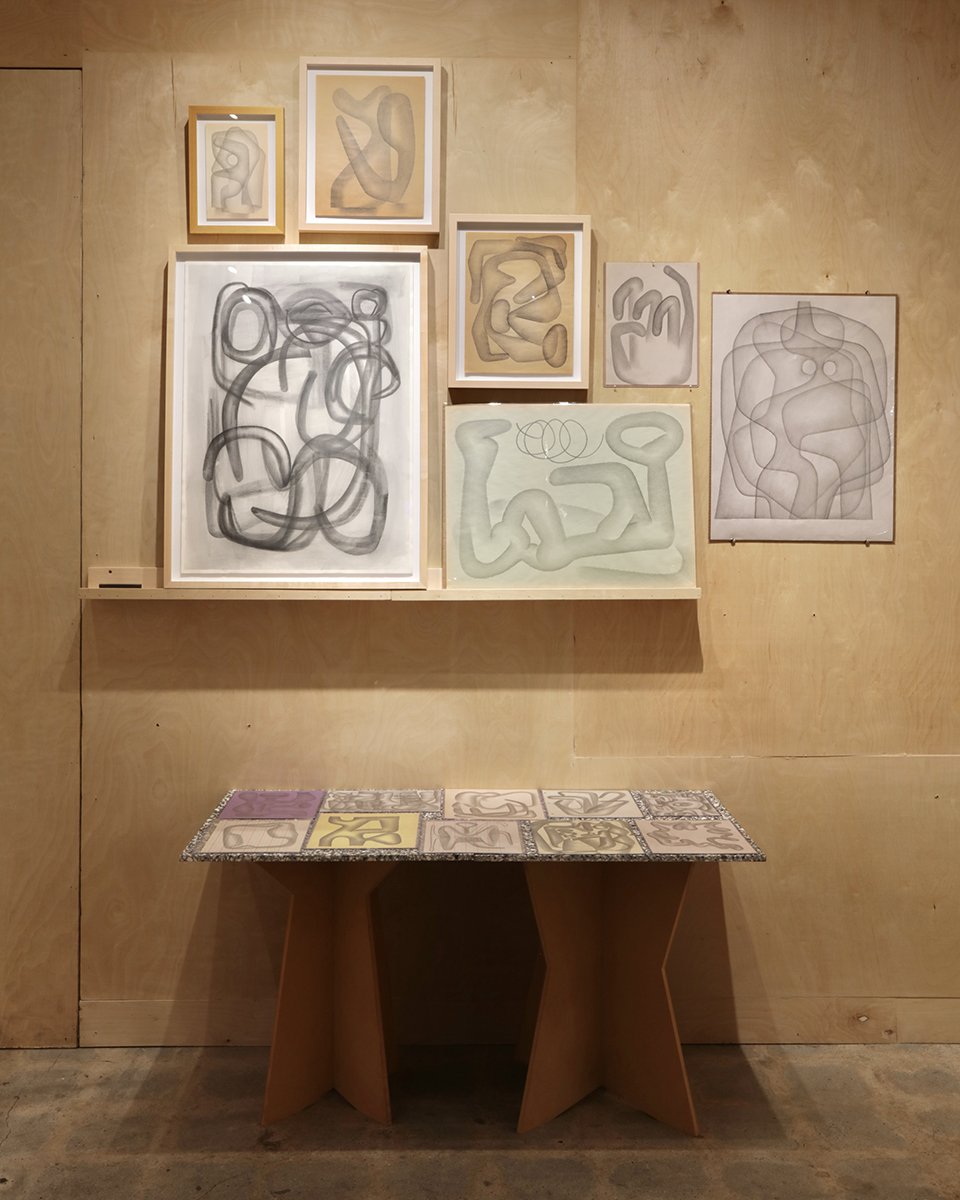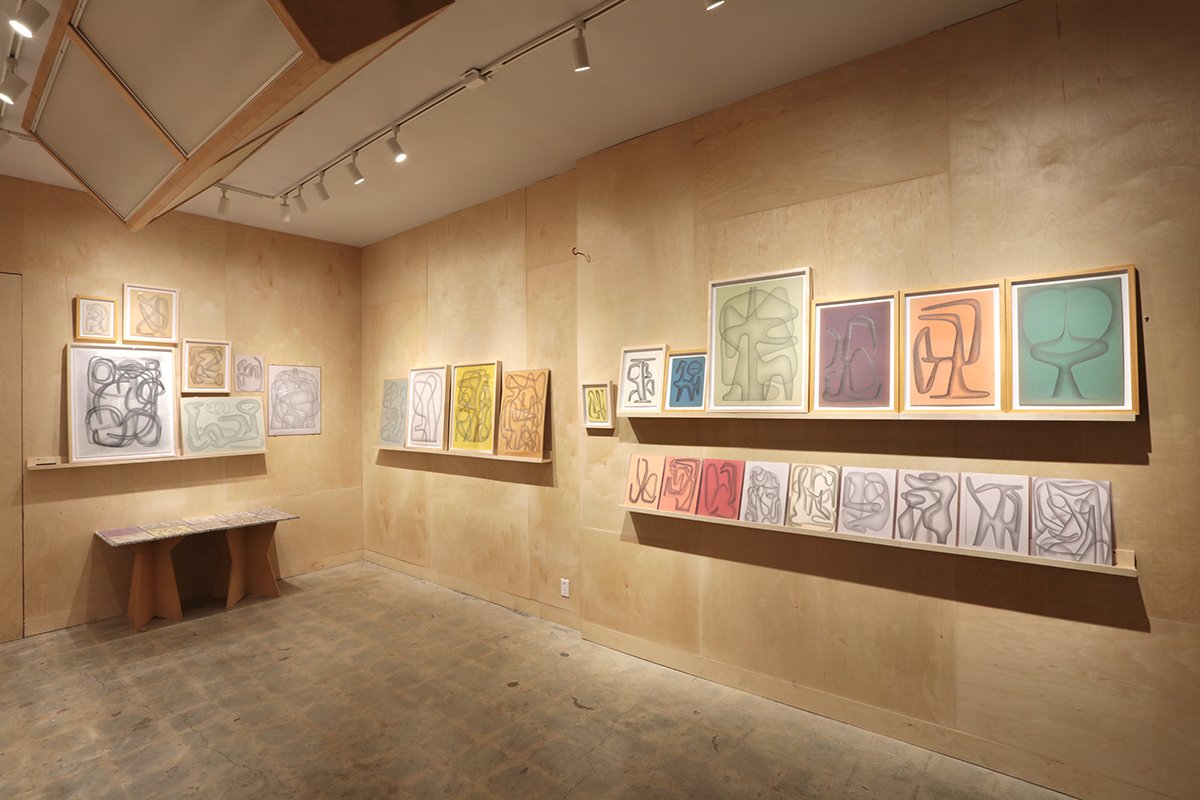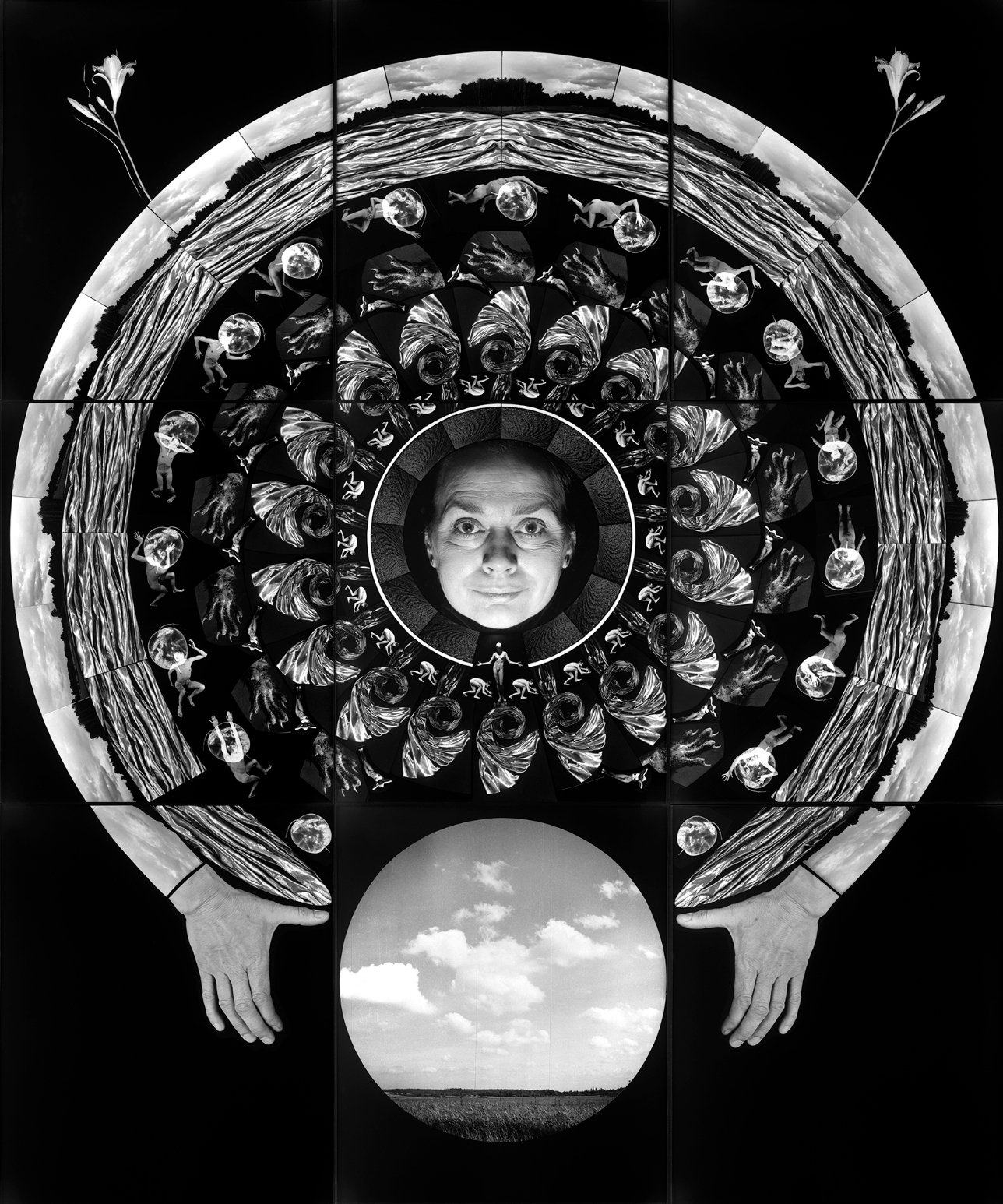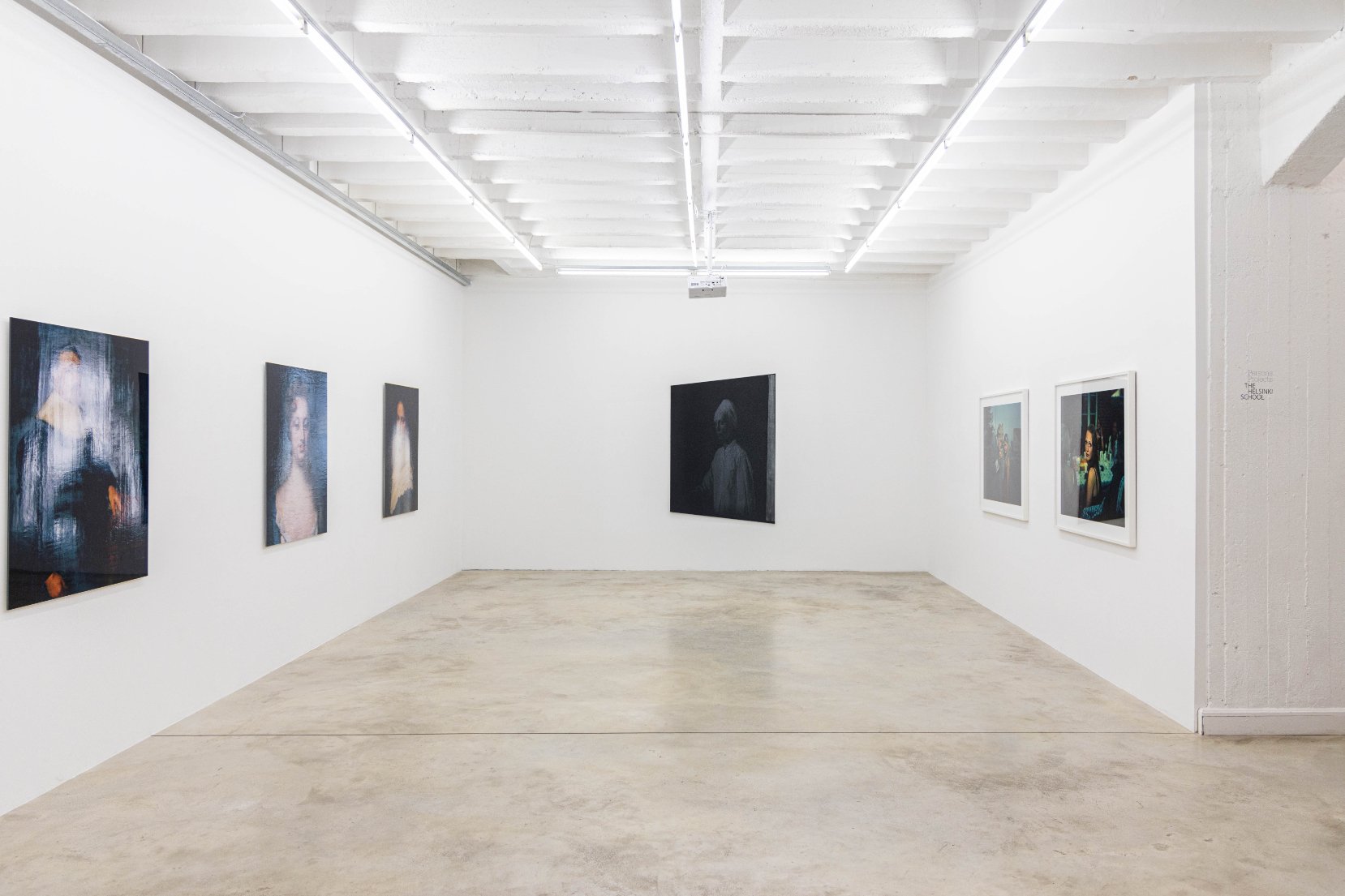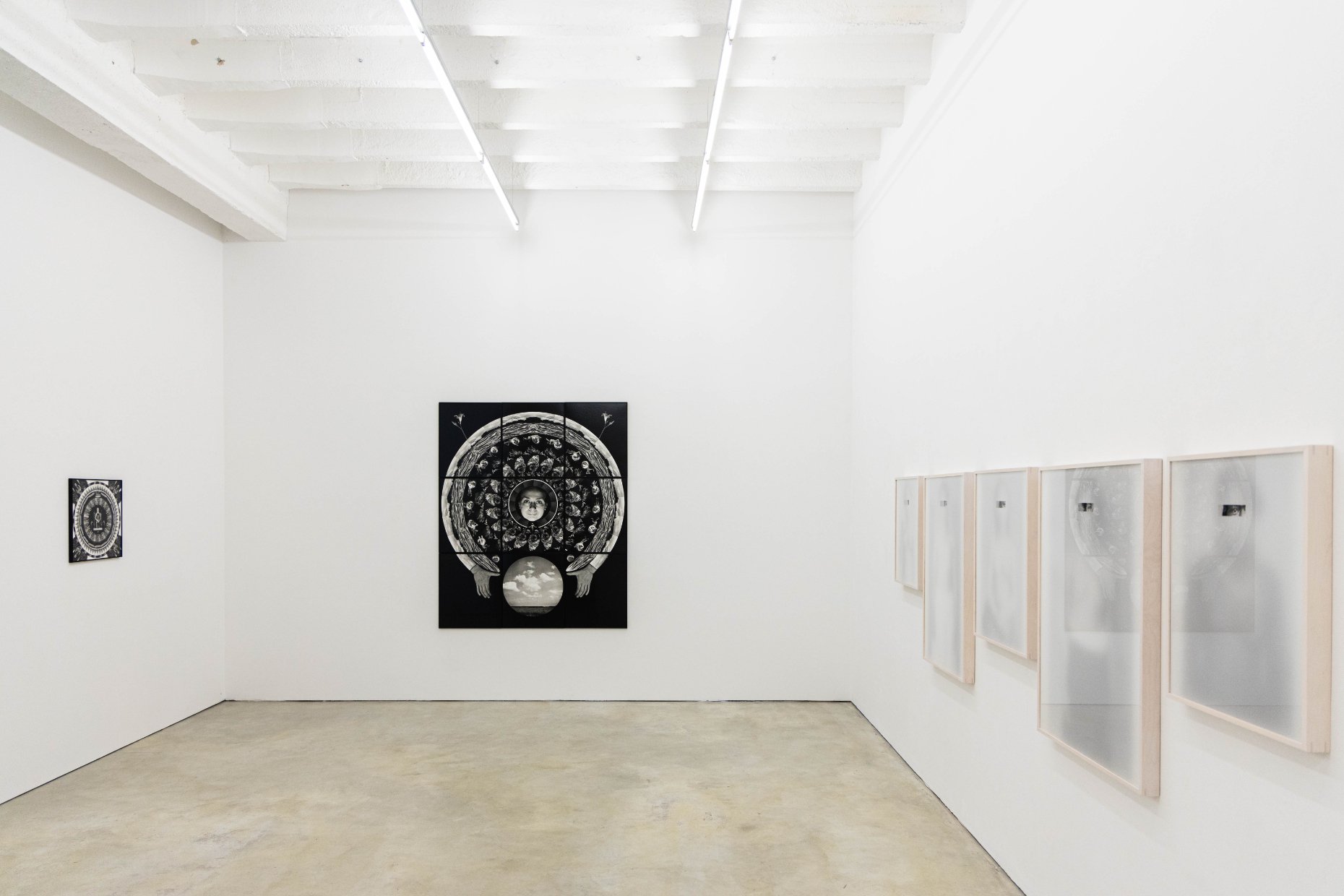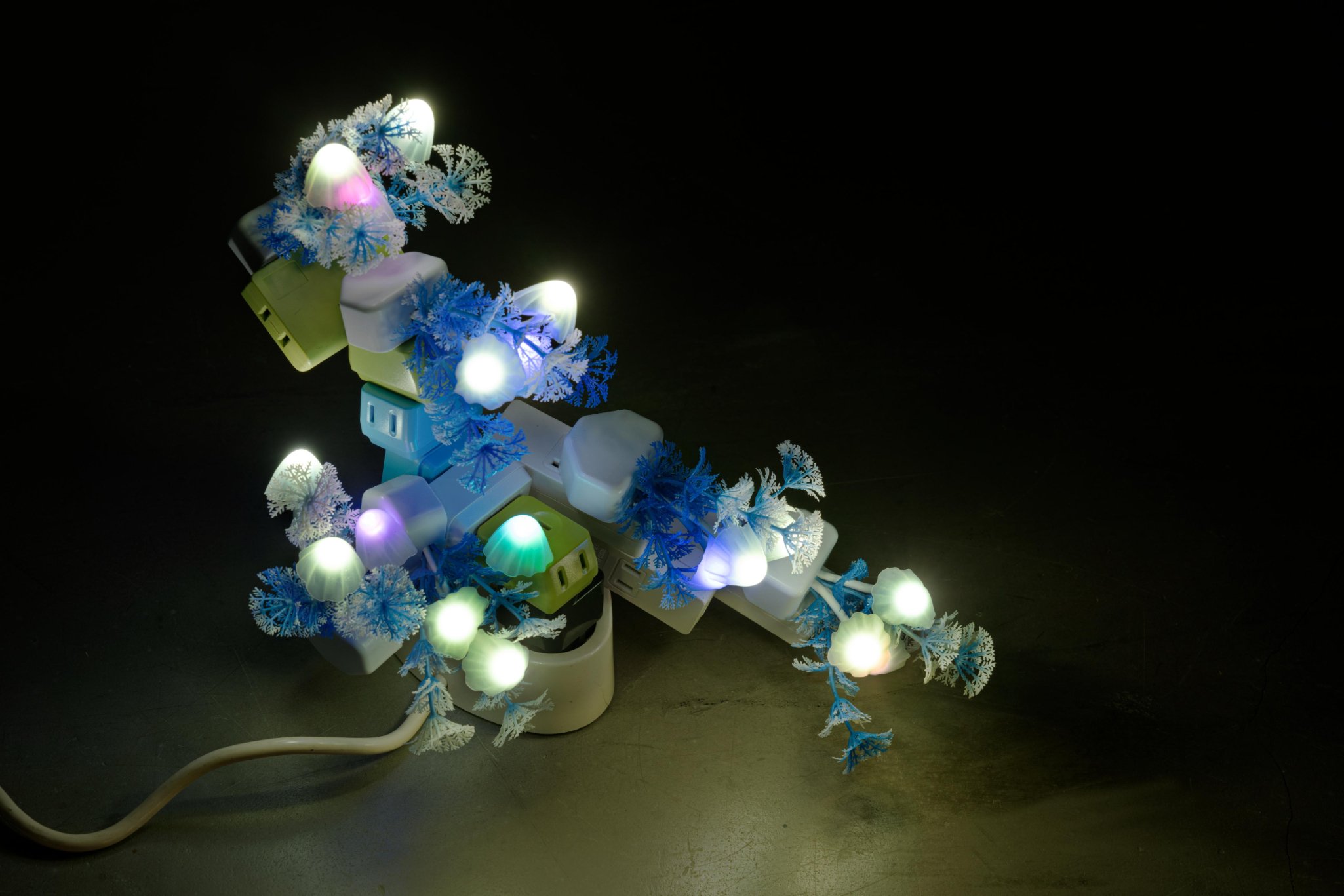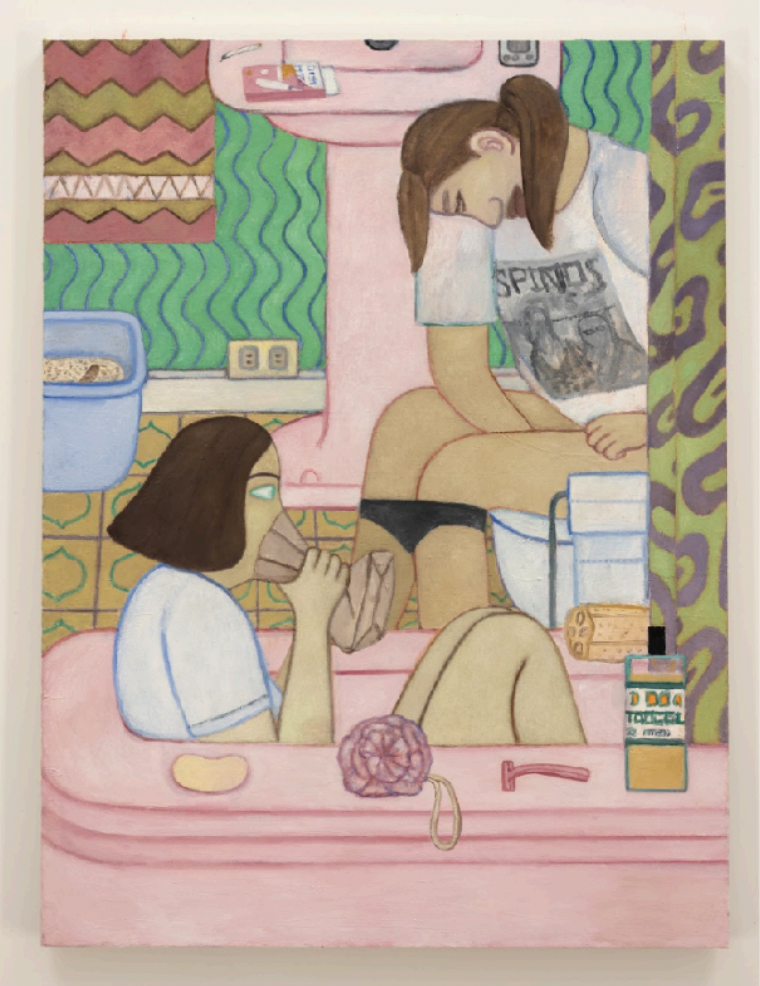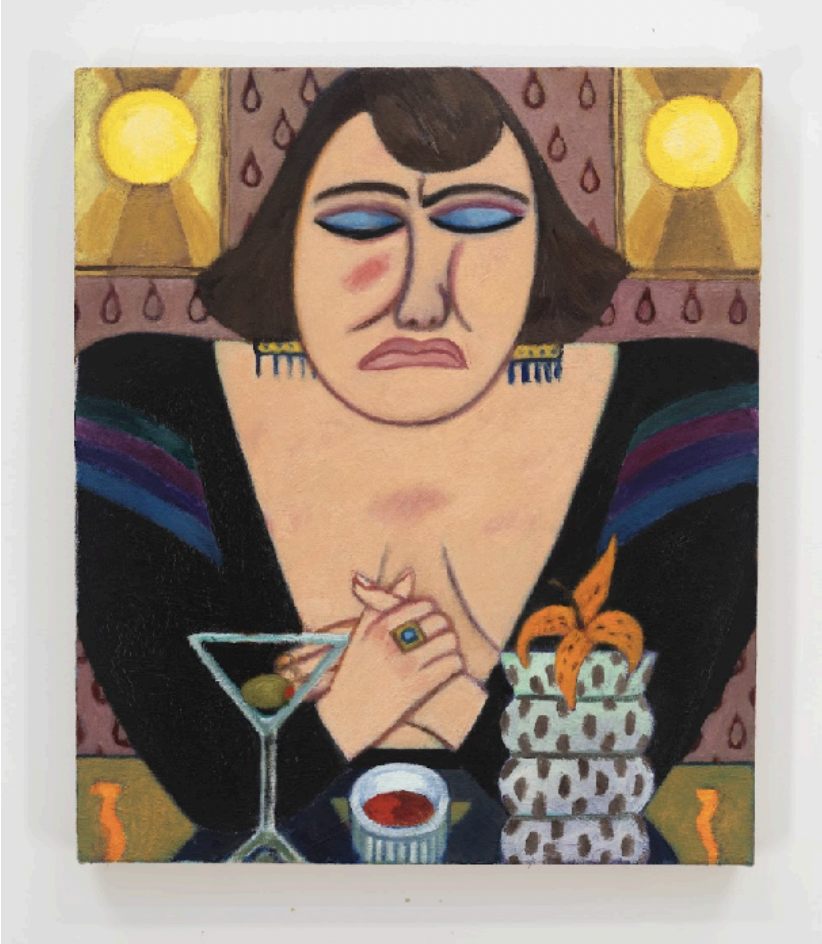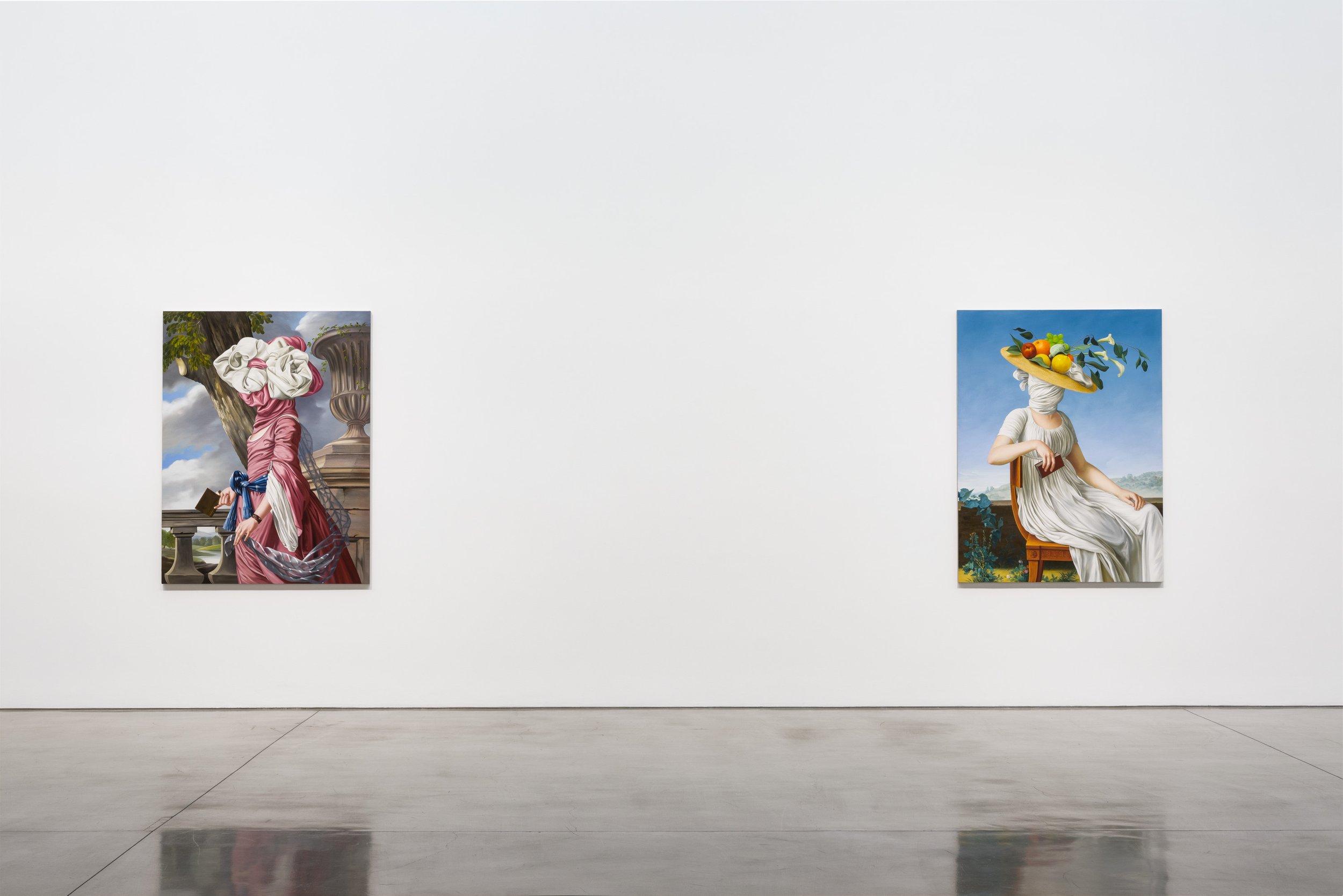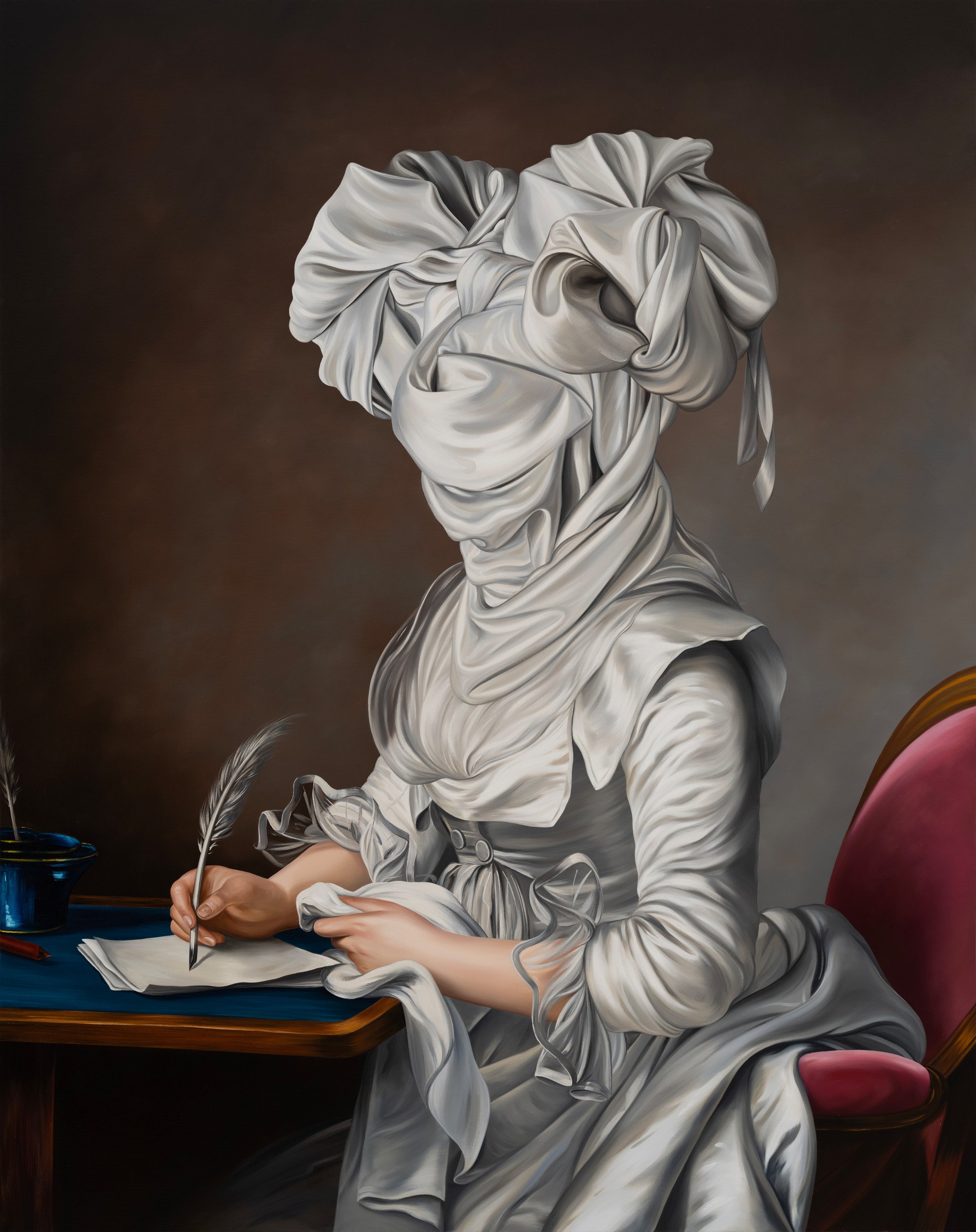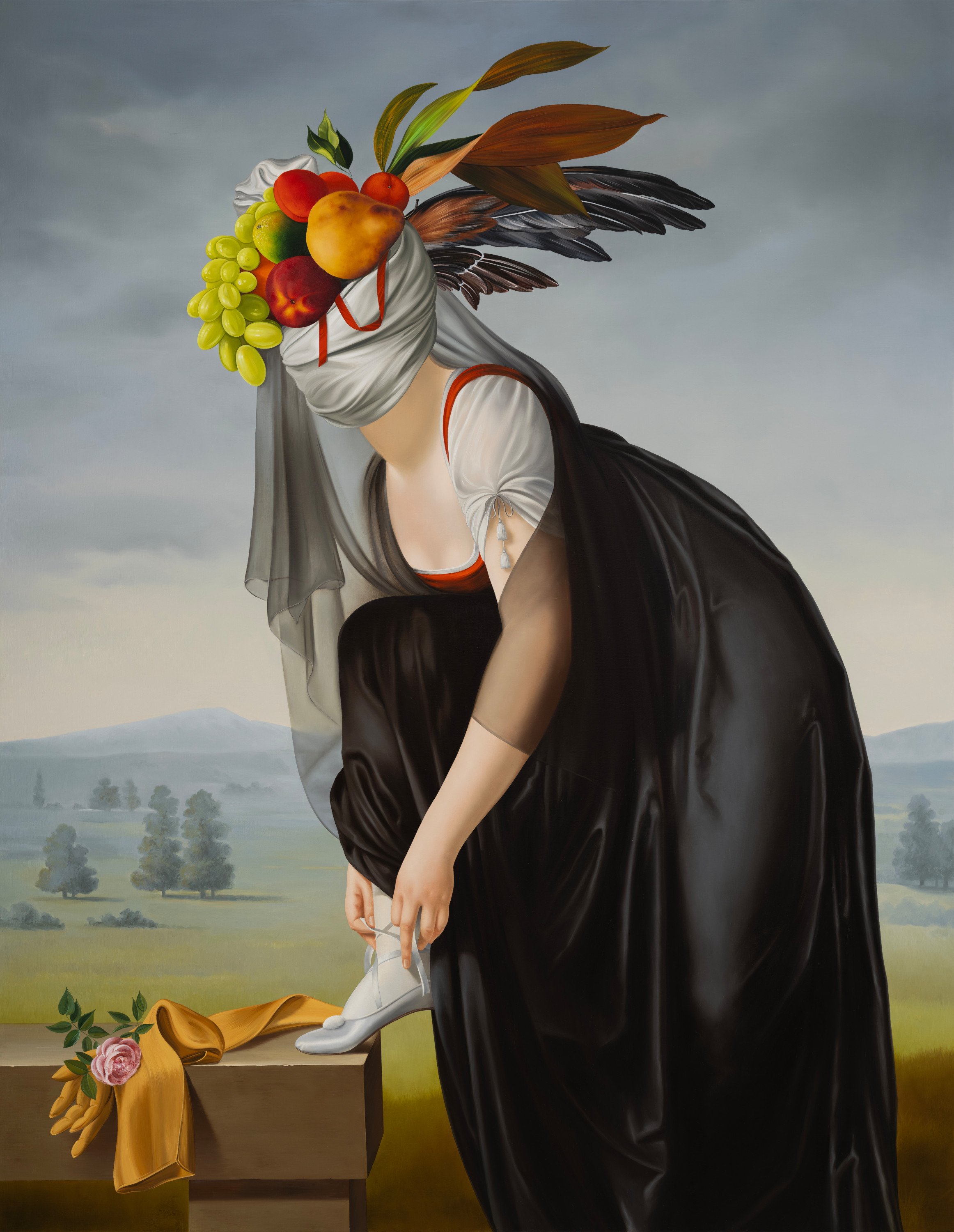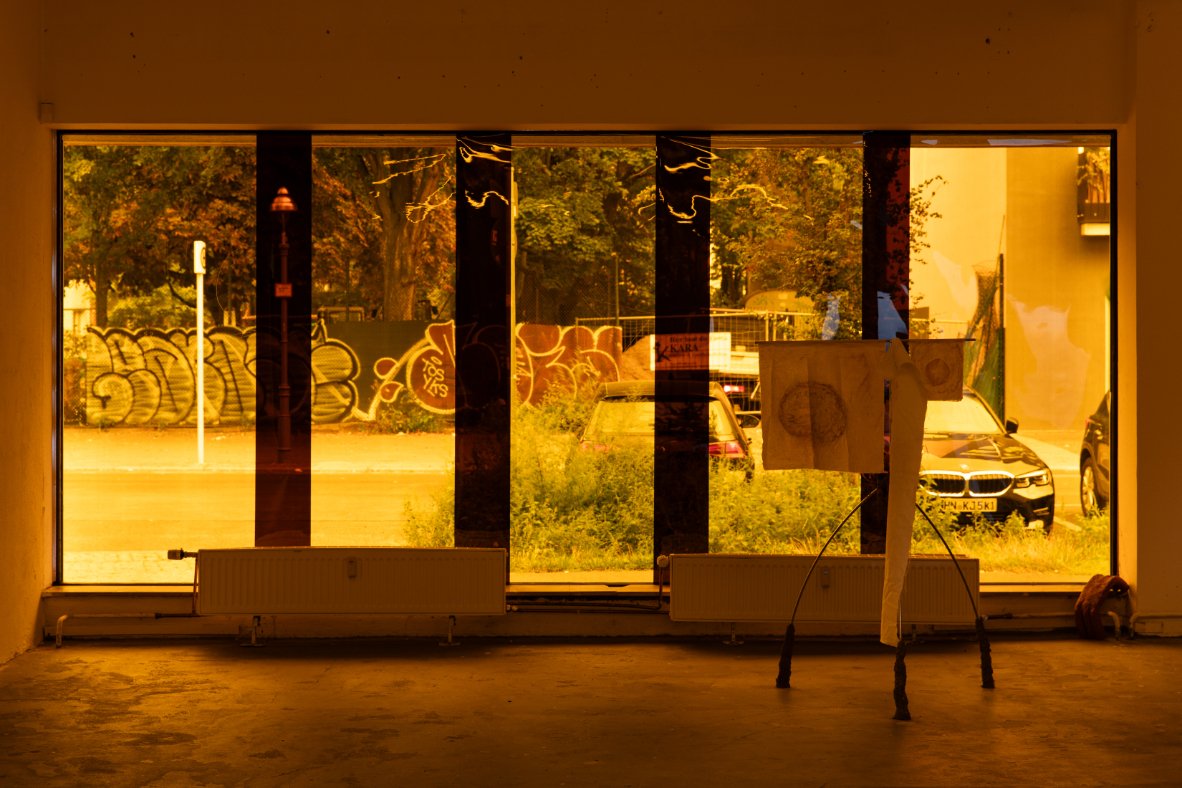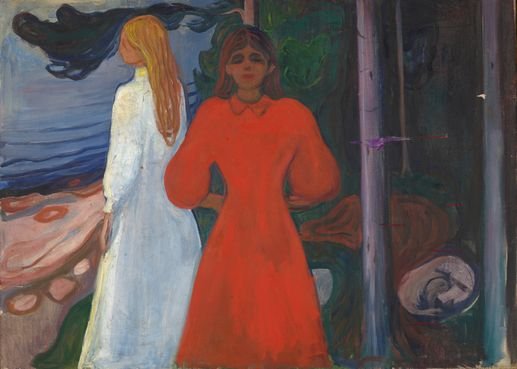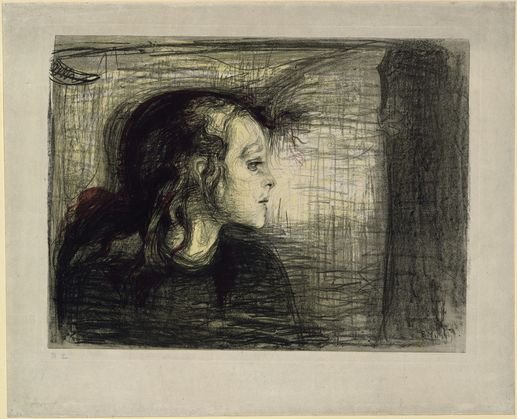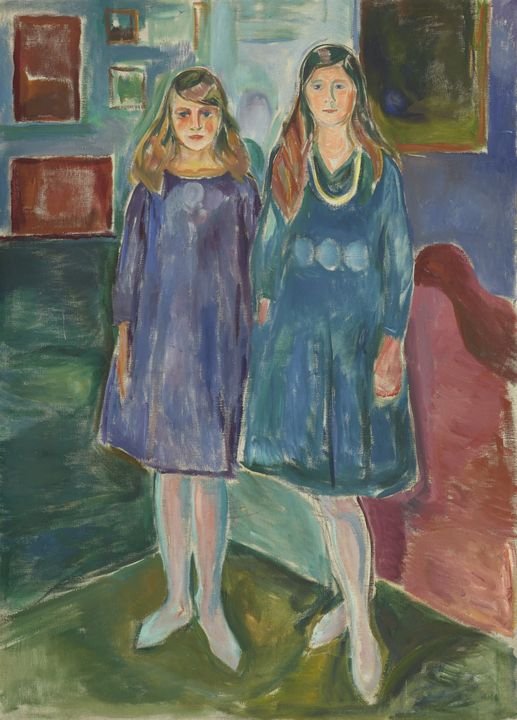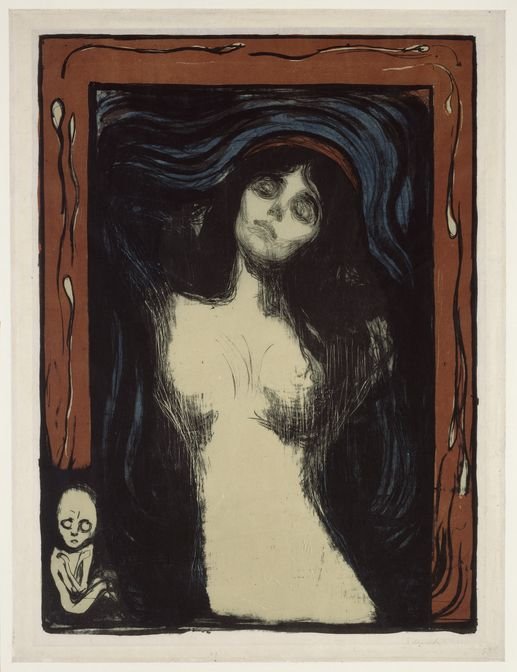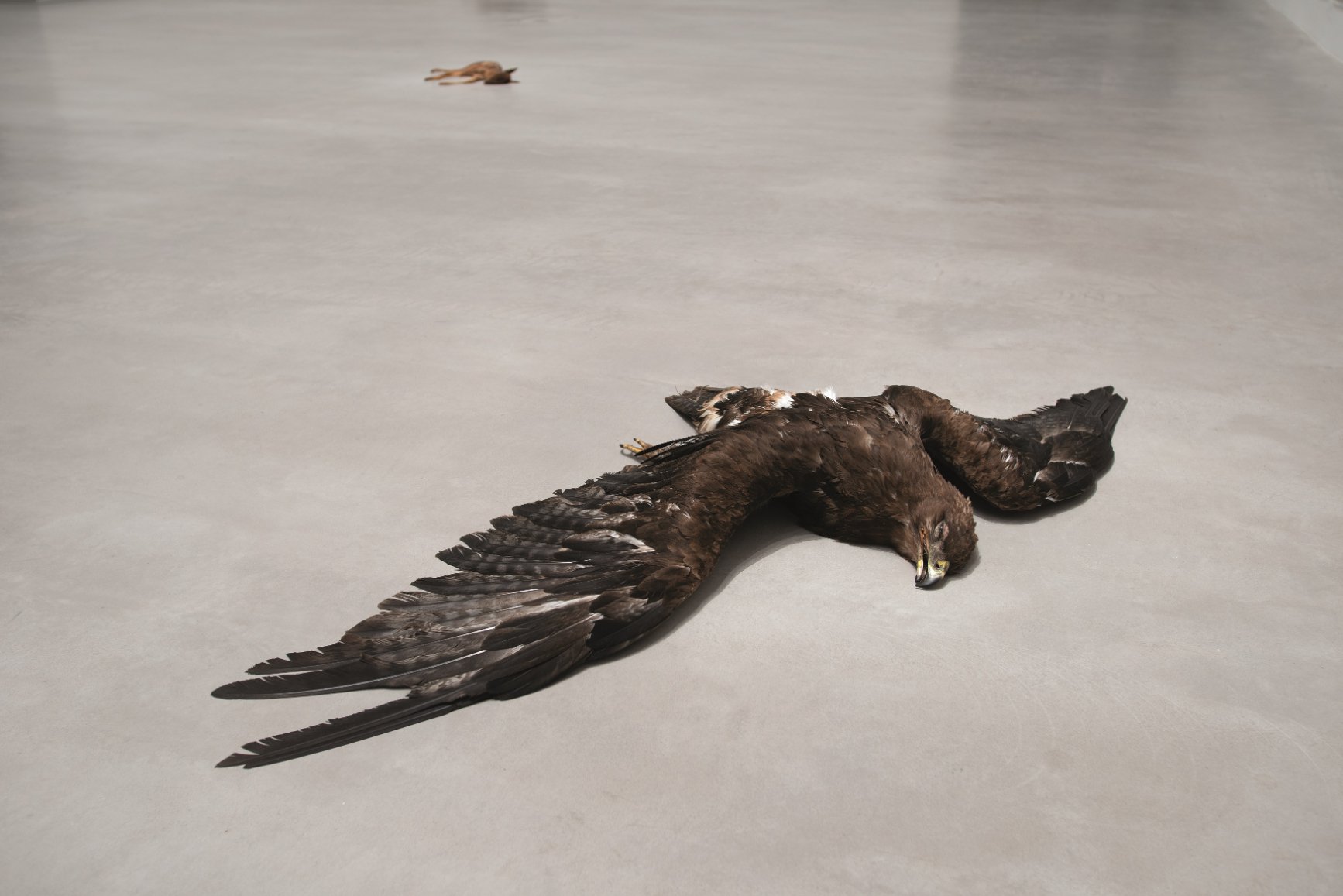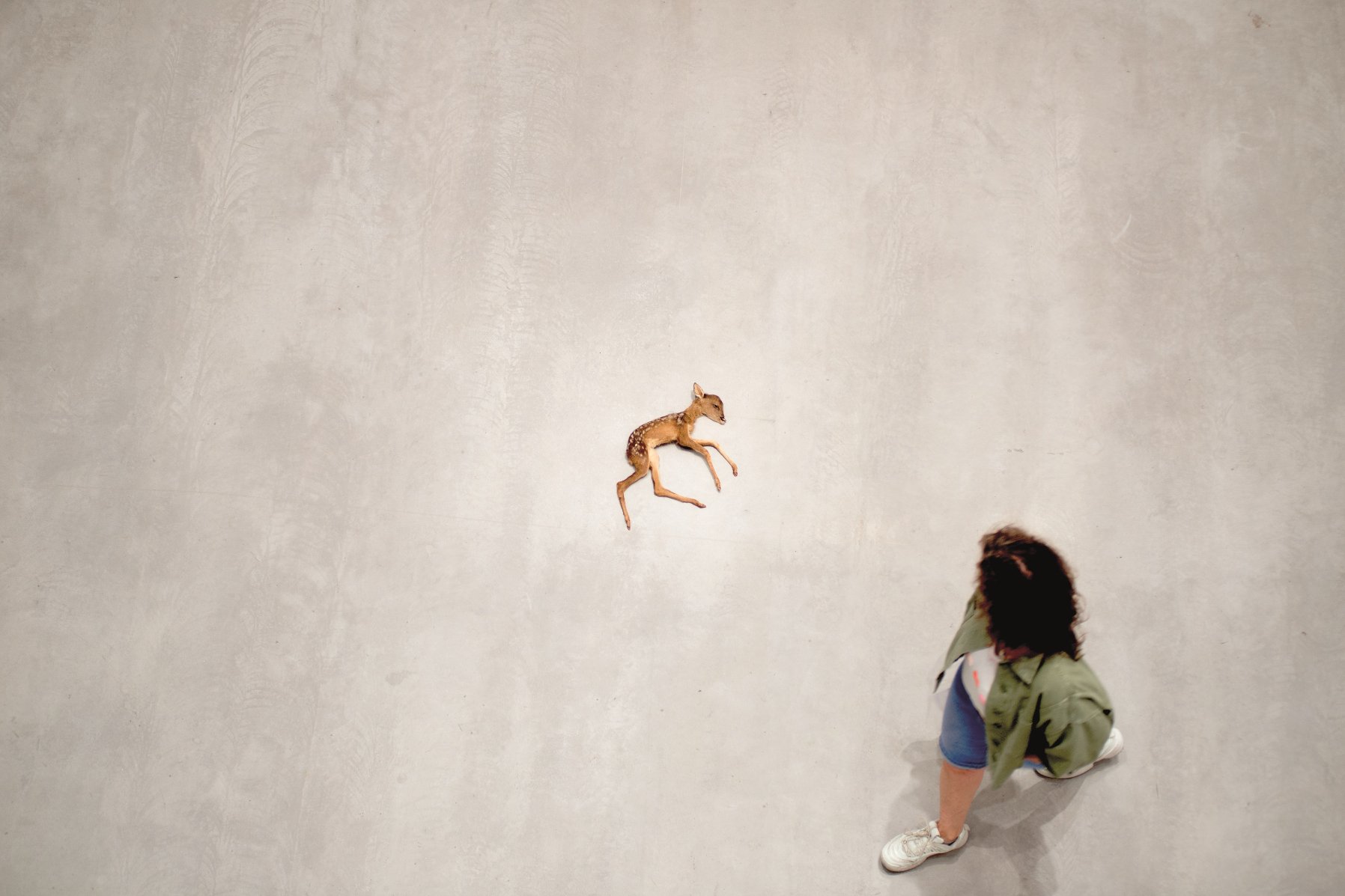text by Tara Anne Dalbow
Upon entering Hugh Hayden’s Hughman exhibition at Lisson Los Angeles, you’re confronted by three interconnected rows of metallic stall doors, the same as you might find in a public restroom. The doors simultaneously invite you toward entry and expel you, intriguing as they are impersonal and ominous. Before you glimpse an object resembling art, you’re implicated in the hidden meaning, an active participant in its revelation. You’re immediately made aware of the physicality of your body, your relationship to the space, and the identity you present to the unknown system of order. Questions arise: Is this a gendered bathroom? Do I belong here? Who am I sharing the space with? The interactive element of opening and closing each door, maneuvering in, out, and between the confined, private spaces, renders engaging from a disembodied perspective nearly impossible. As the exhibition's title implies, there’s no leaving one’s hughmanity at the door.
My initial impression of imposition and interest follows me into the first stall, where a carved commode sprouts a bramble of thorny fir tree branches. The protrusion of sharp limbs obstructs further inspection; the effect is claustrophobic and disconcerting, and I back out cautiously. Behind the next door, a baby’s crib constructed from barbed wire and chain link fencing; behind another, interlocking wedding rings with Descovy pills [HIV antiviral] where the solitaire would be; and behind yet another, a classroom desk consumed entirely by abrasive white nylon bristles. Each object offers participation in a facet of contemporary American life under conditions as unwelcoming, uncomfortable, and caustic as the specular toilet seat.
The visceral materiality of the various textures, though not physically touched, commandeer the senses as the bristles scrape, the barbs prick, and the branches snag against your skin. Prongs, spurs, and skewers disrupt movement and threaten physical confrontation while also poking metaphorical holes in expectations and illusions. Here, the most fundamental promises of the American dream, like the right to an education, are rendered onerous, animating the question: for whom were these institutions made? If the skin you’re in determines your experience, and the object's surface or skin reflects the relative ease or distress of the encounter, then certainly not for the artist, a Black queer man, and by association, those like him.

